Lecture 17
Binary Search Trees
MCS 275 Spring 2023
Emily Dumas
Lecture 17: Binary search trees
Reminders and announcements:
- Project 2 due at 6pm on Friday
- Project 1 solutions posted
Sample code
Tree-related examples will go in the new directory datastructures in the course sample code repository.
Goals
Learn about search and insert operations on binary search trees.
Implement in Python.
Explore application to a fast data structure for storing a set of integers.
Binary search tree (BST)
A binary tree in which:
- Nodes have keys that can be compared
- The key of a node is greater than or equal to any key in its left subtree.
- The key of a node is less than or equal to any key in its right subtree.
Binary tree
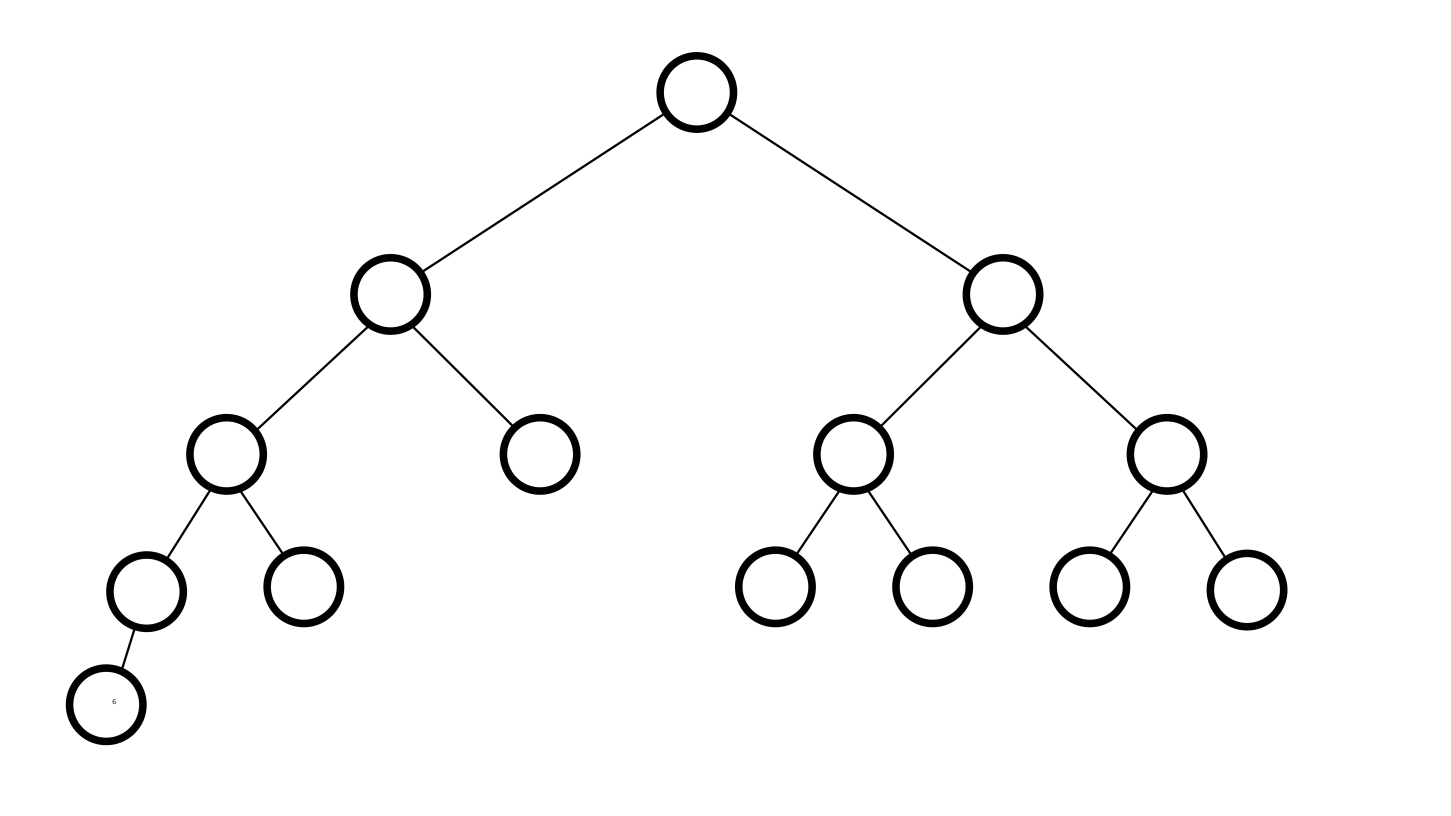
BST
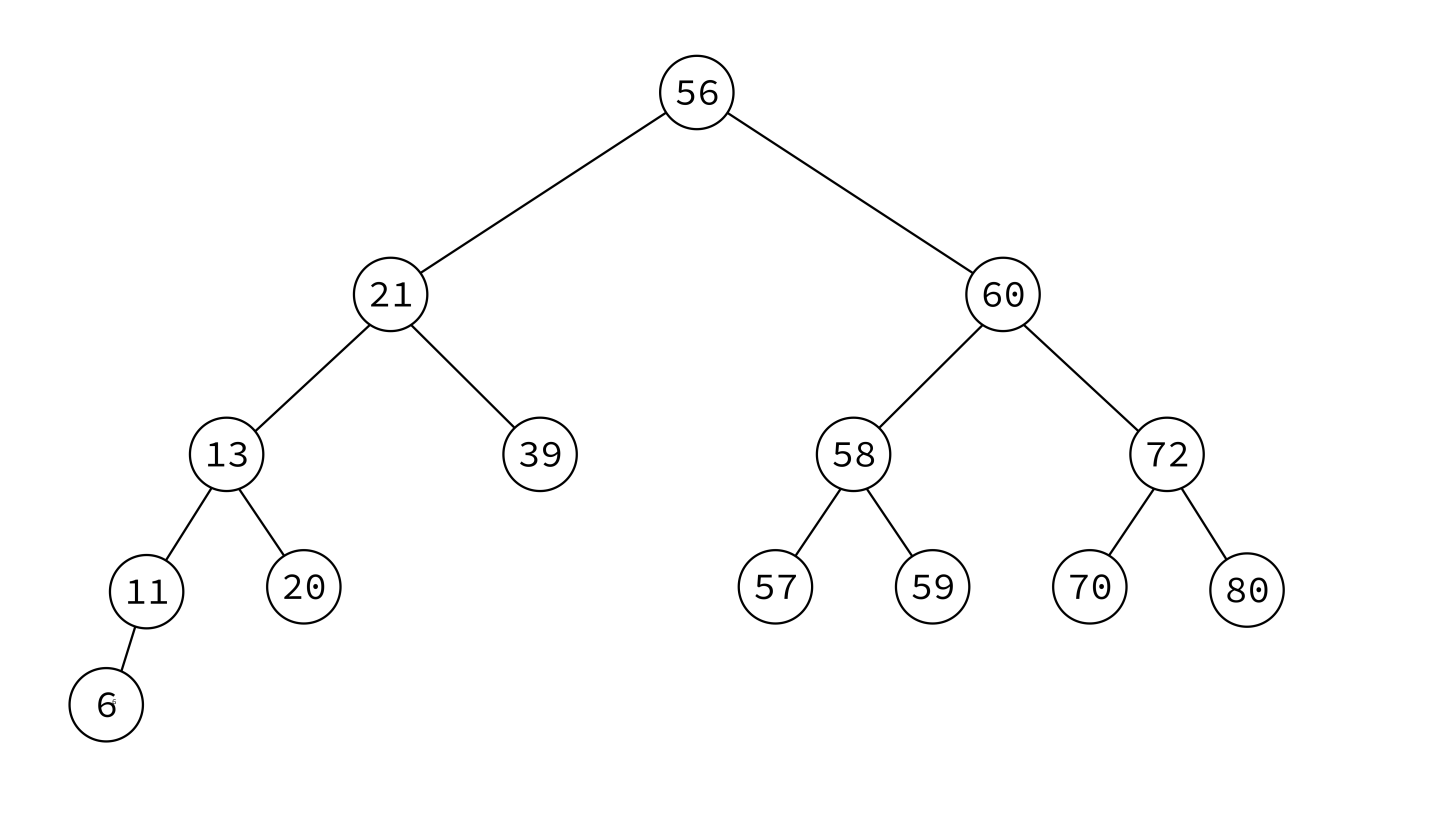
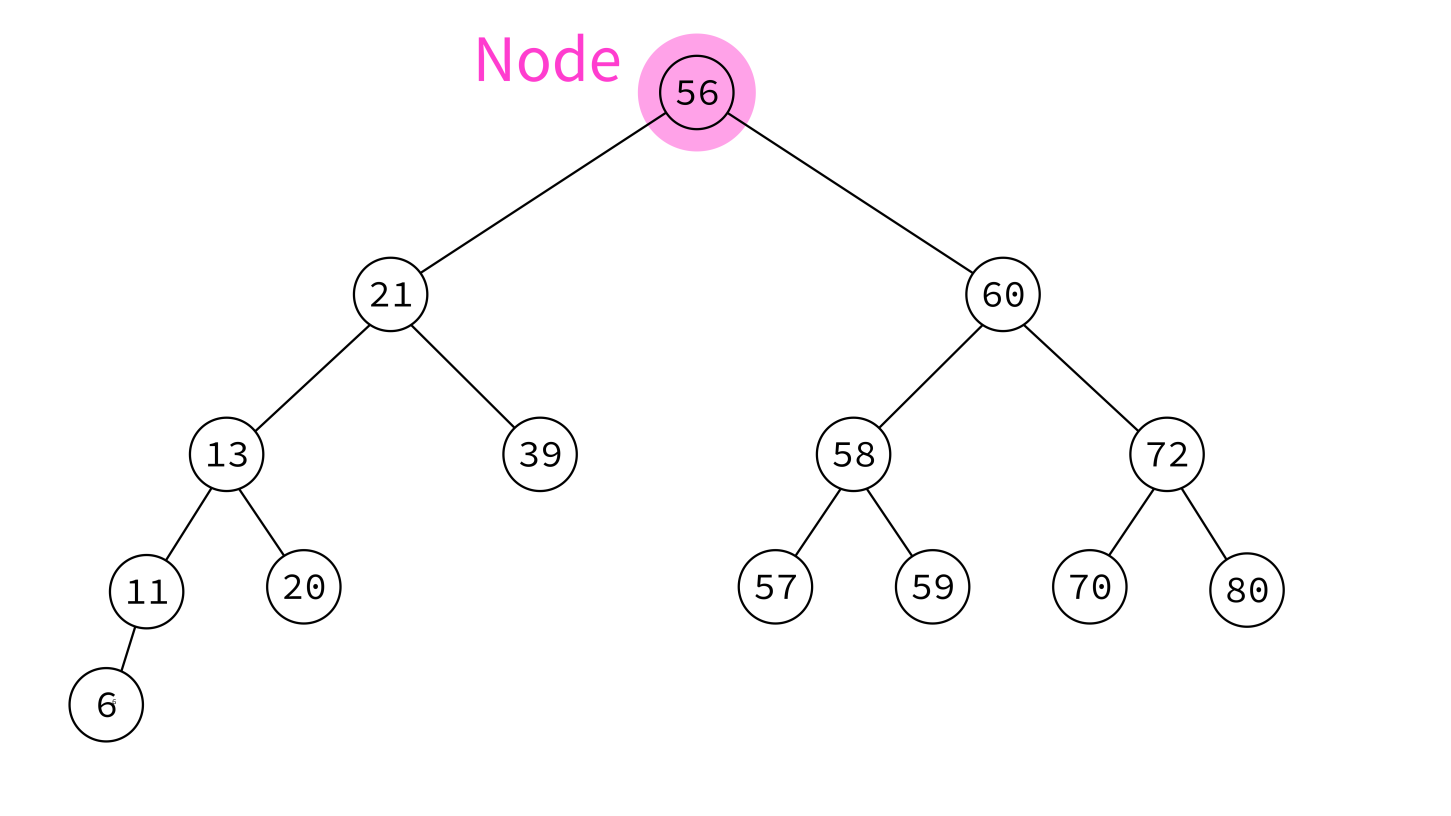
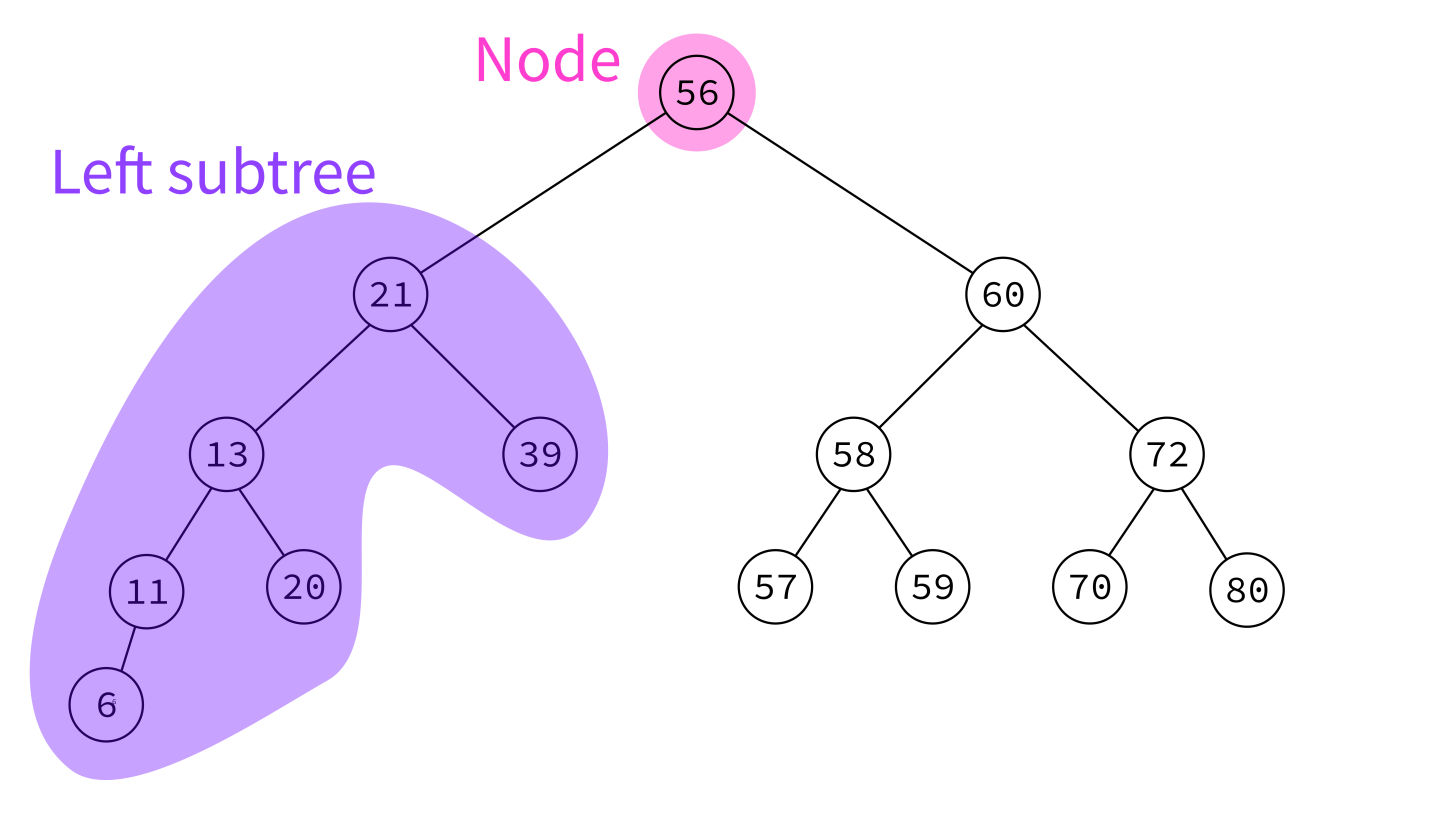
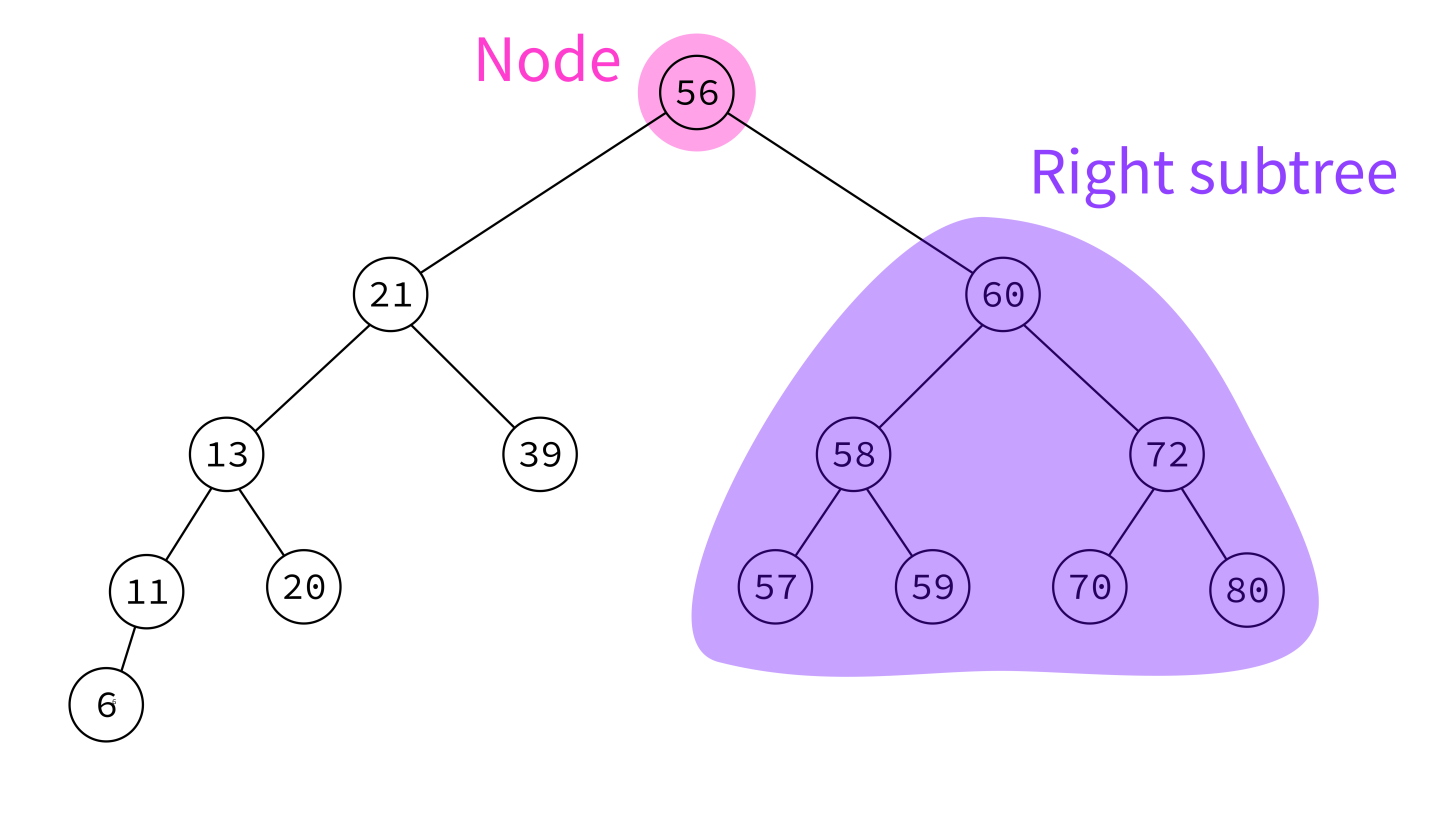
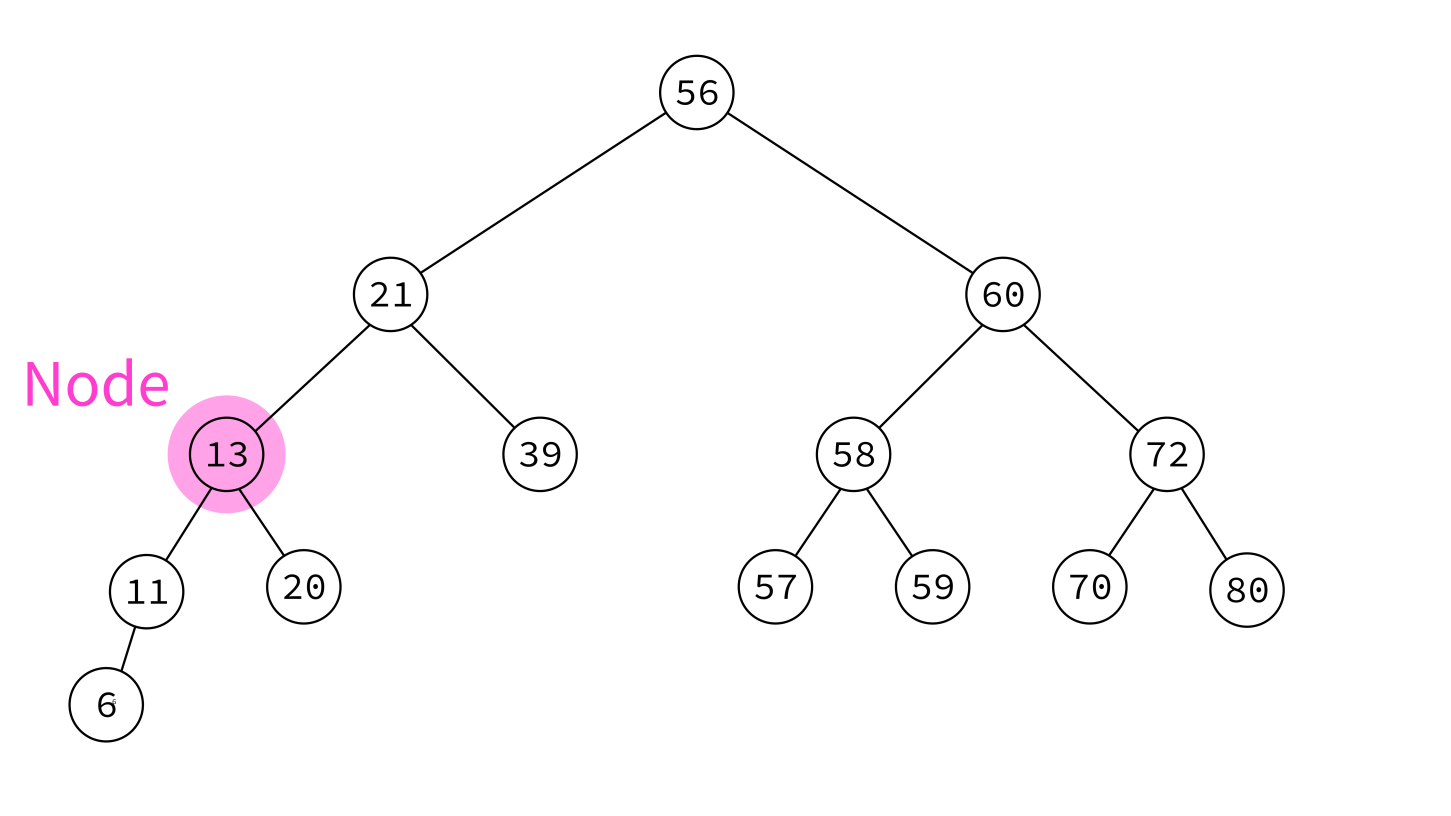
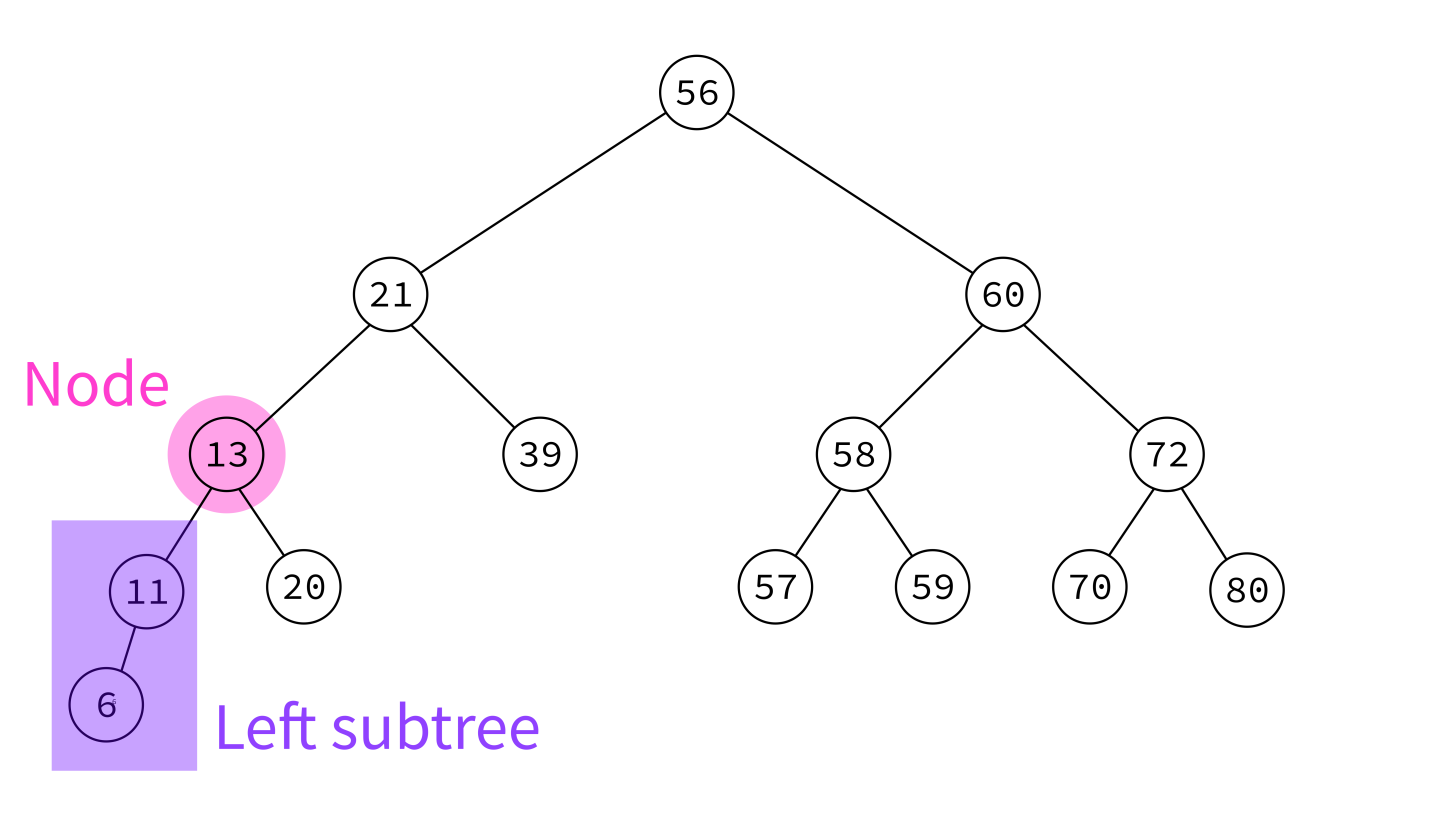
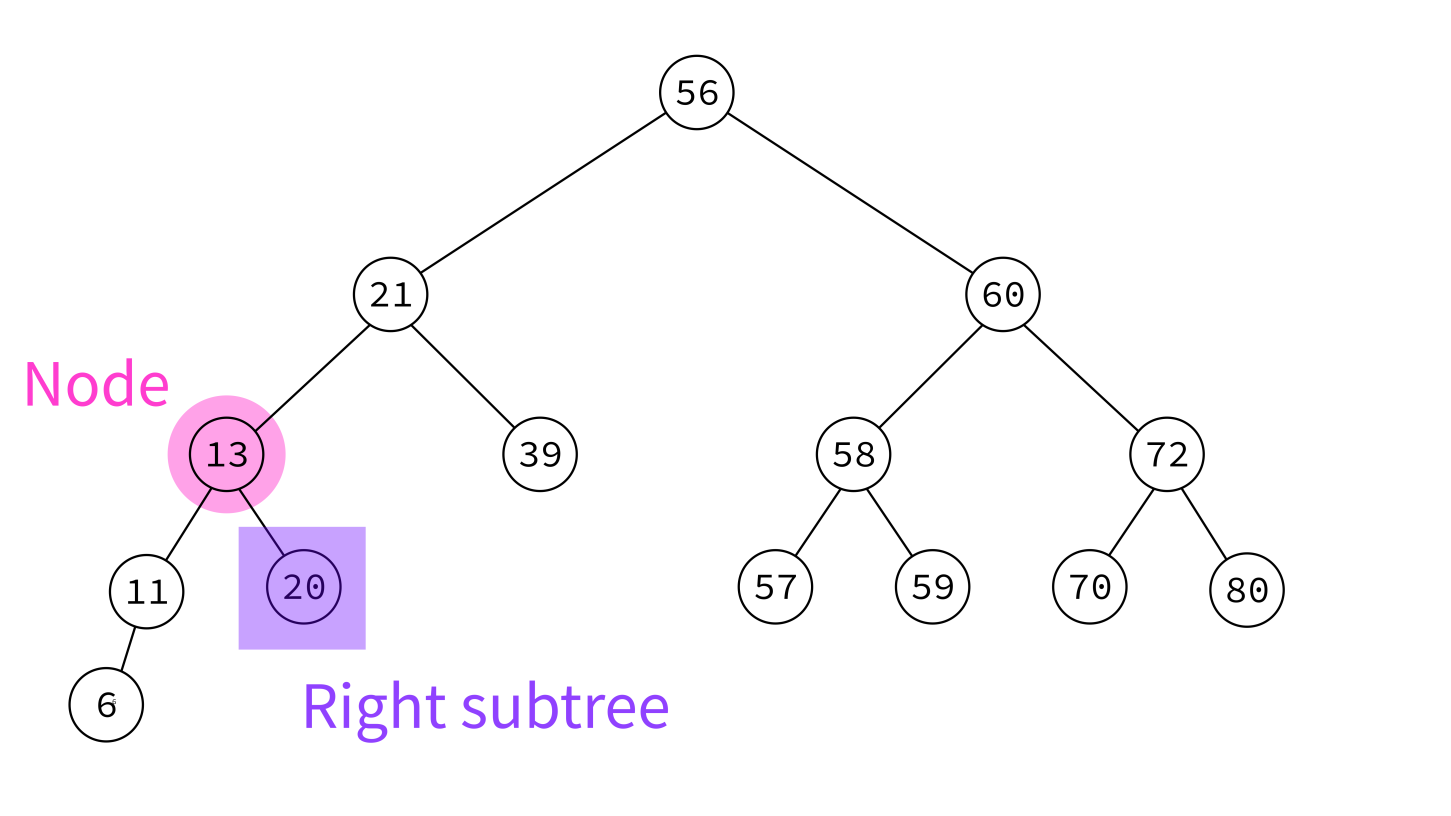
NOT a BST
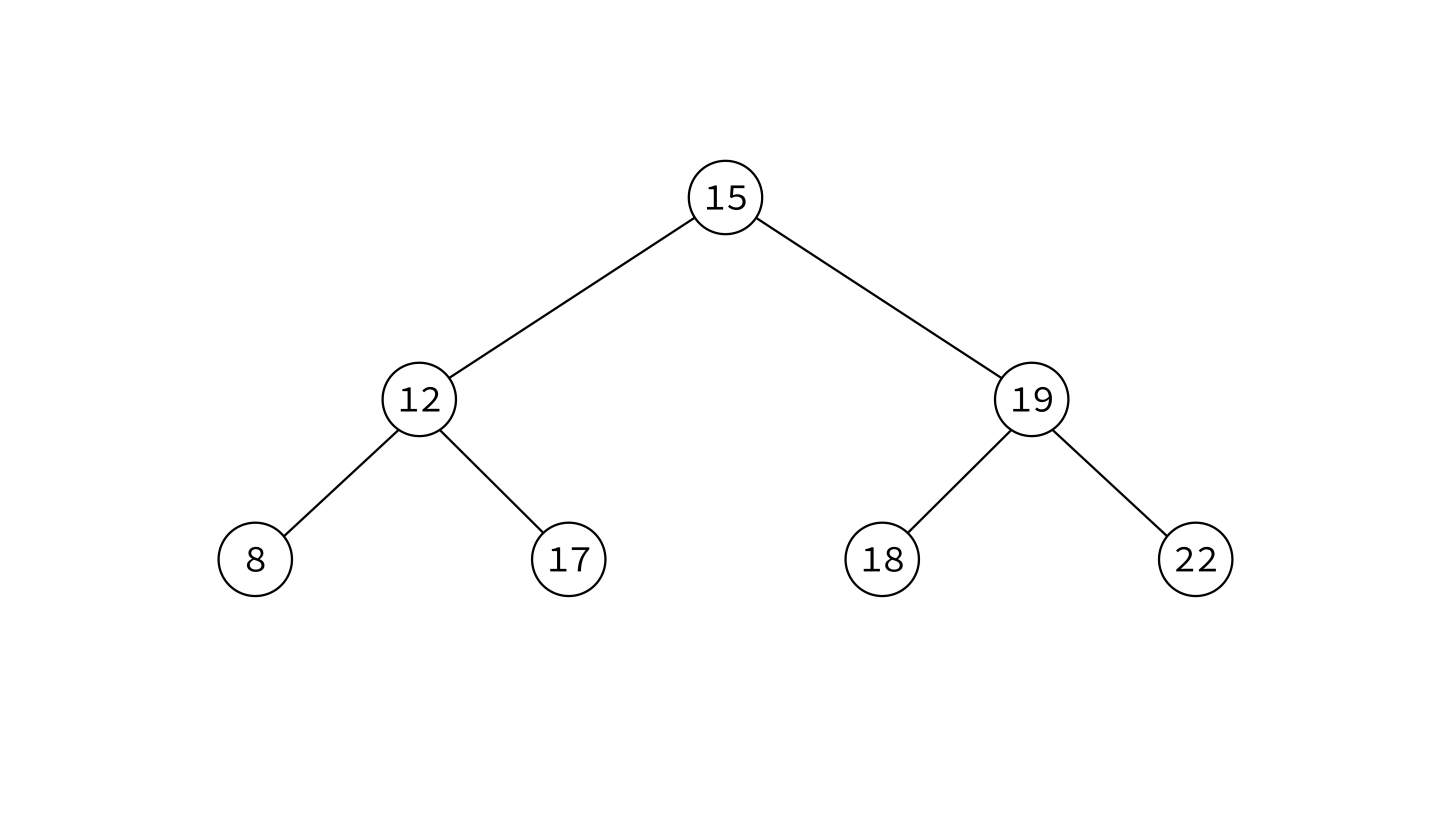
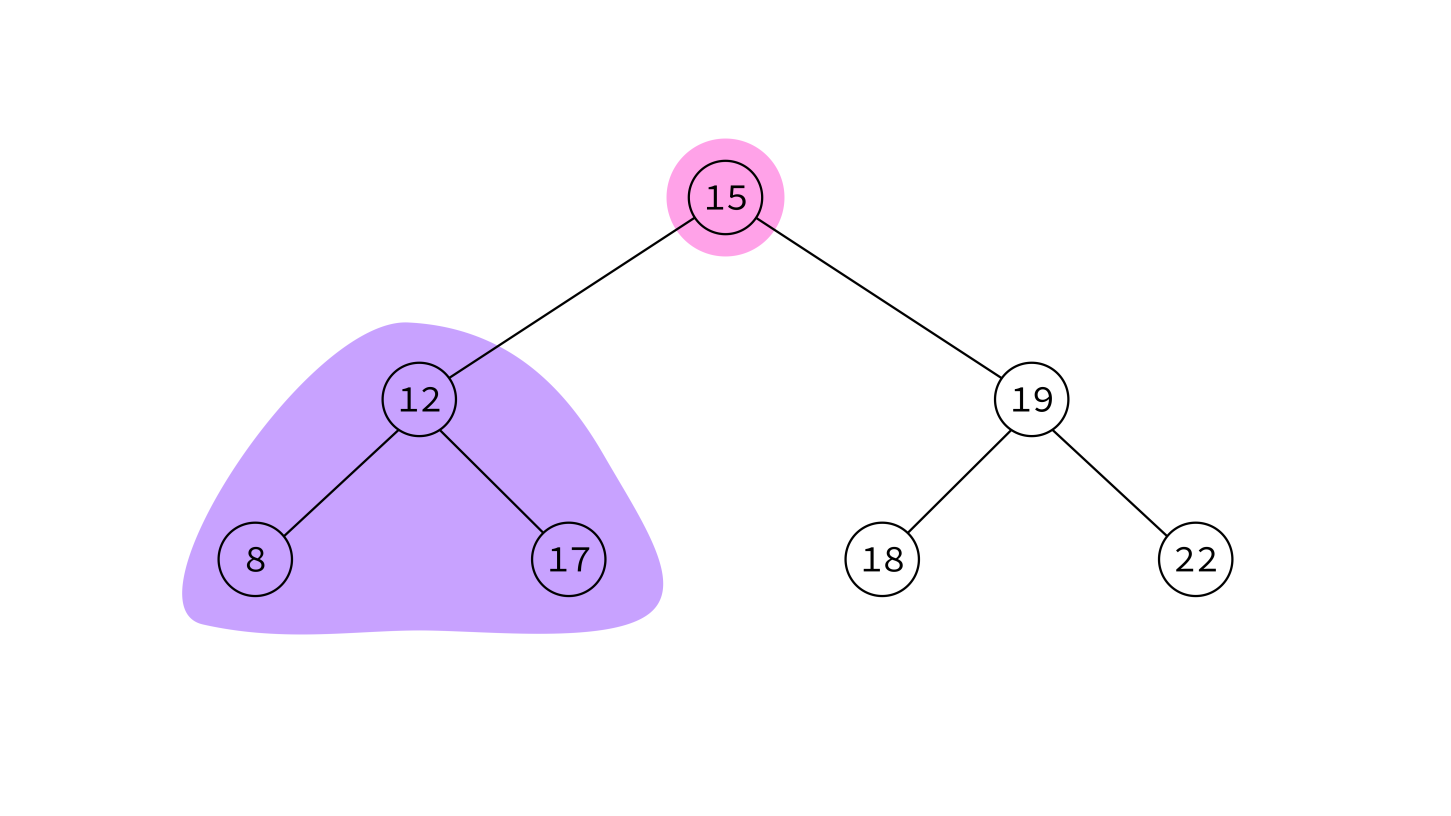
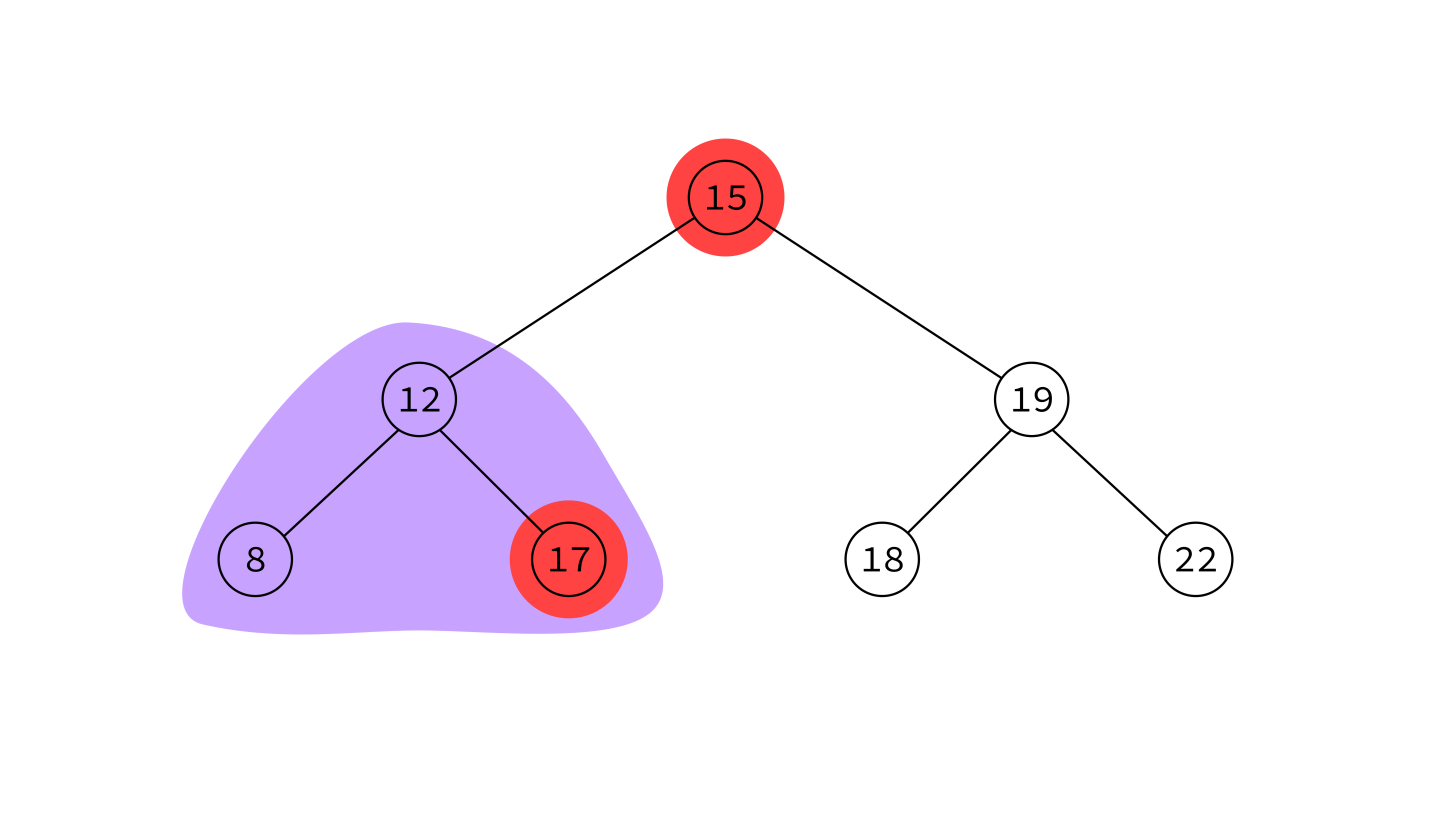
This "just" is a binary tree with keys.
Tree terms
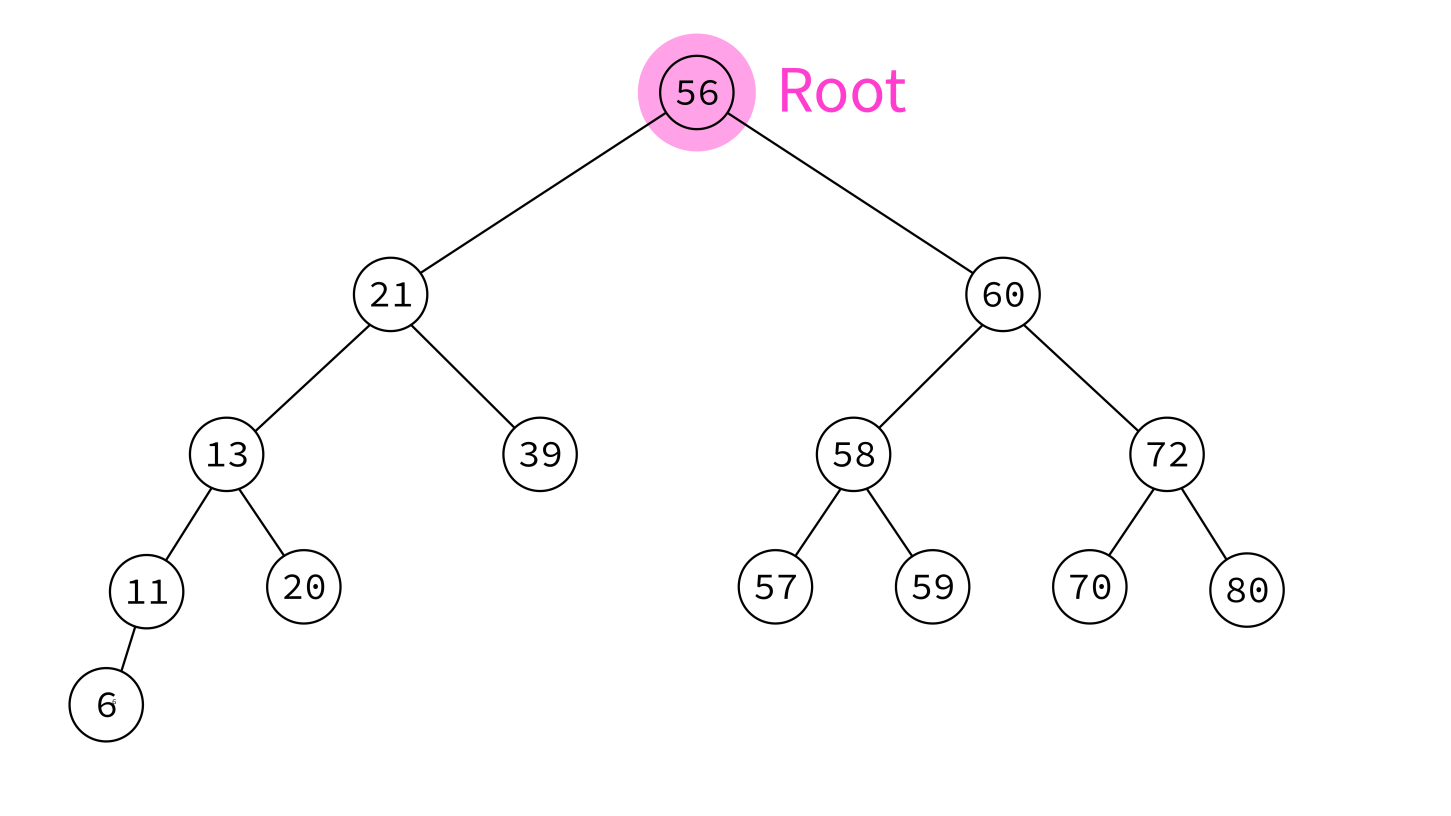



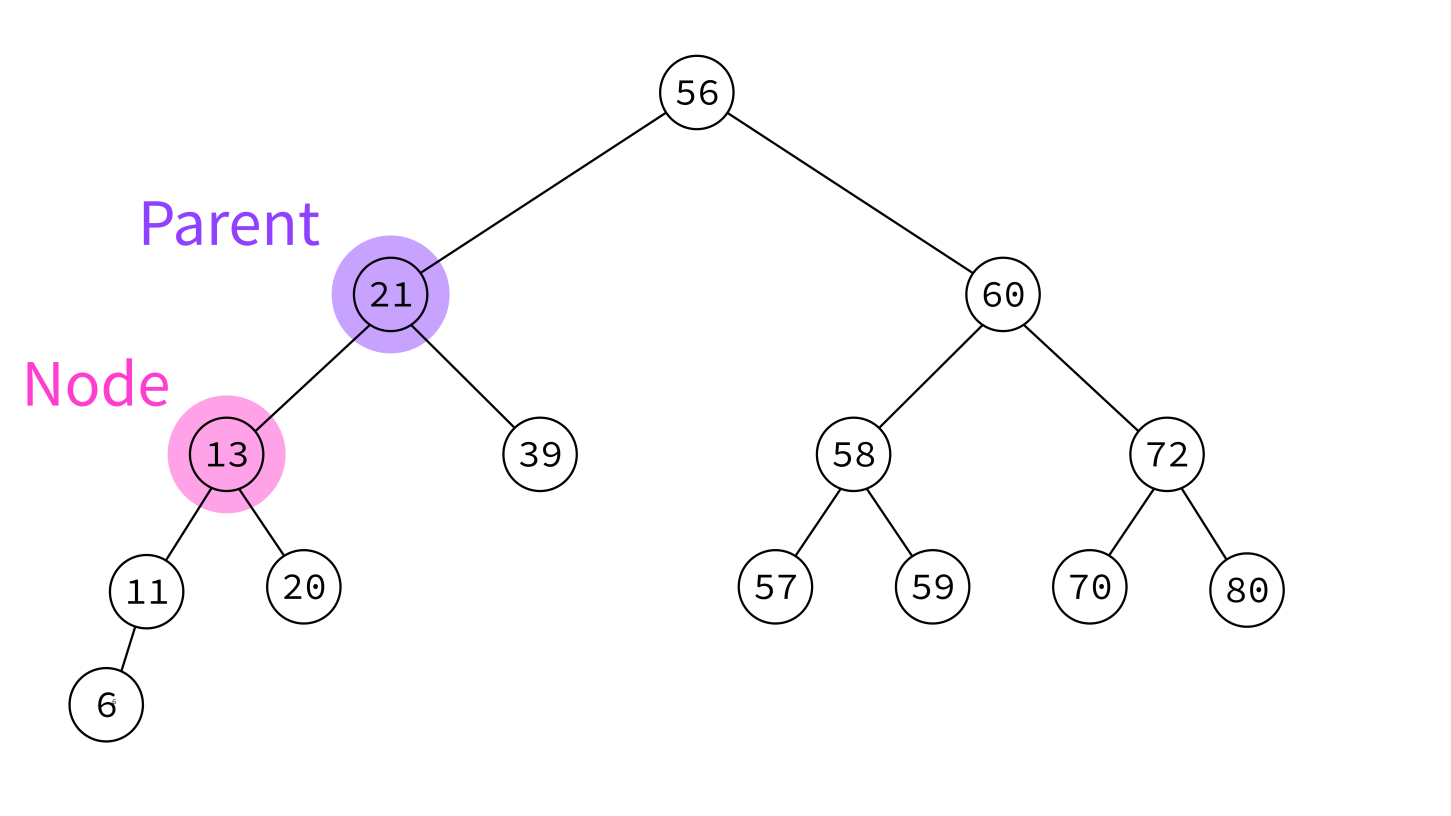
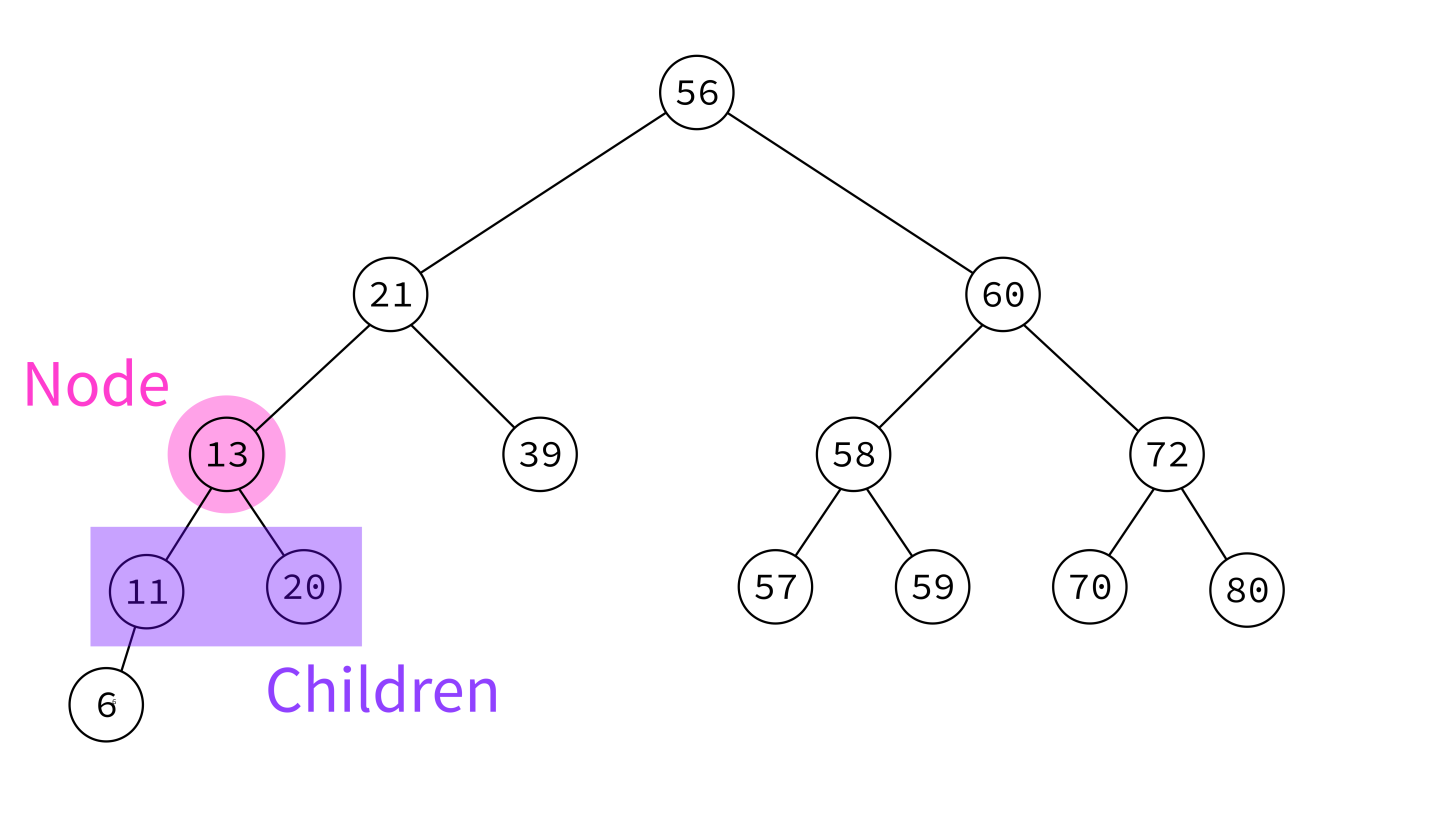
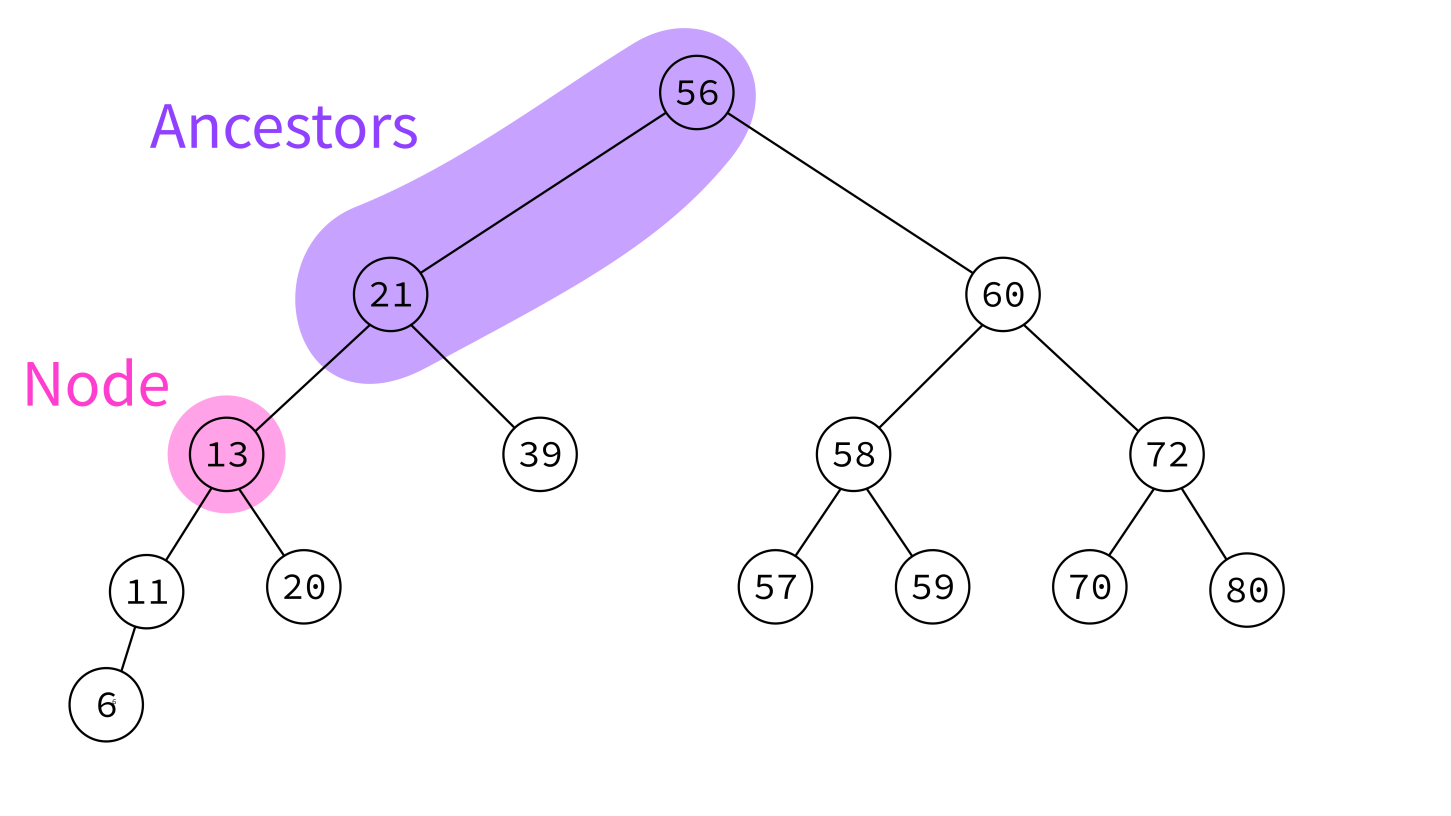
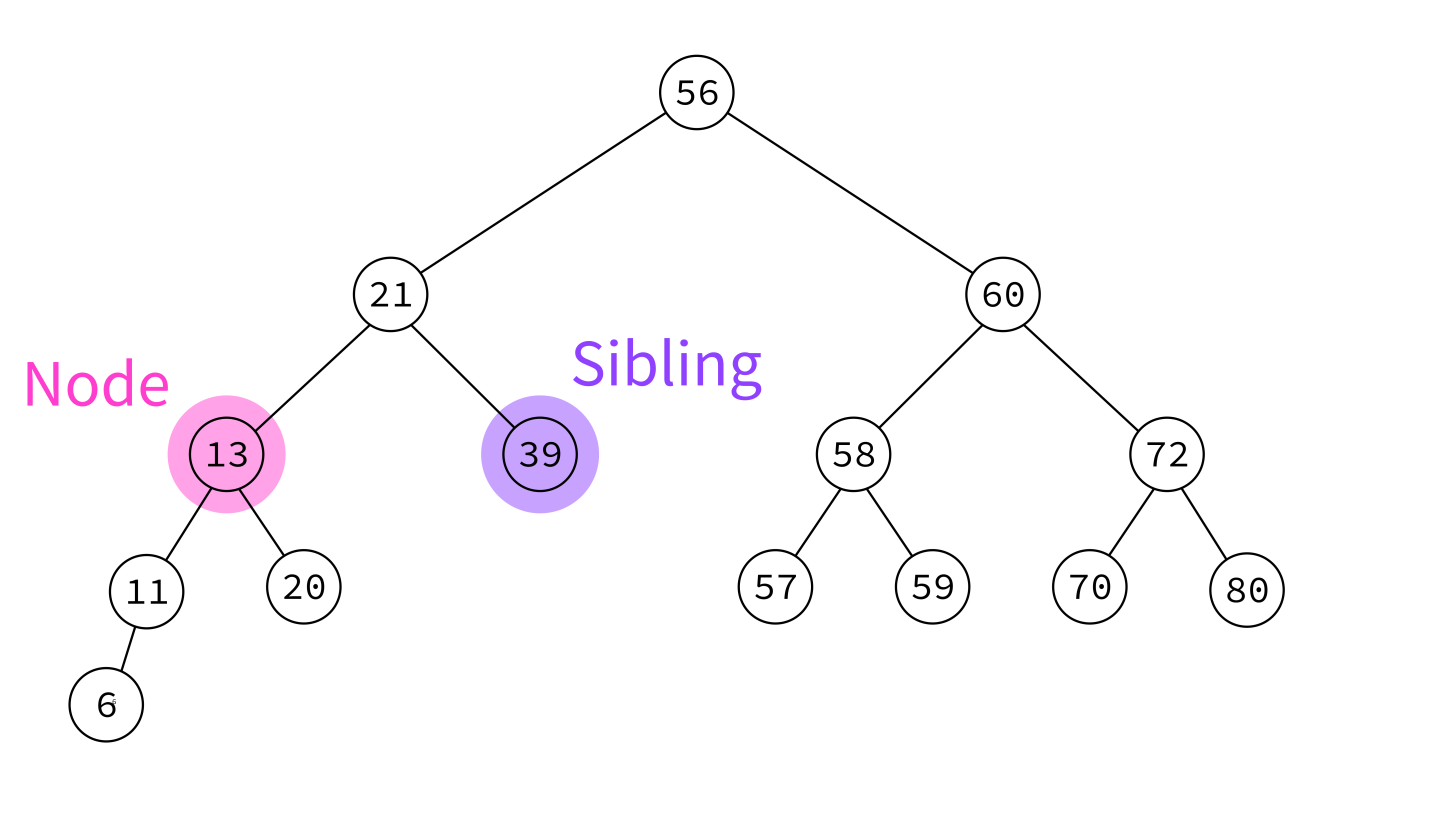
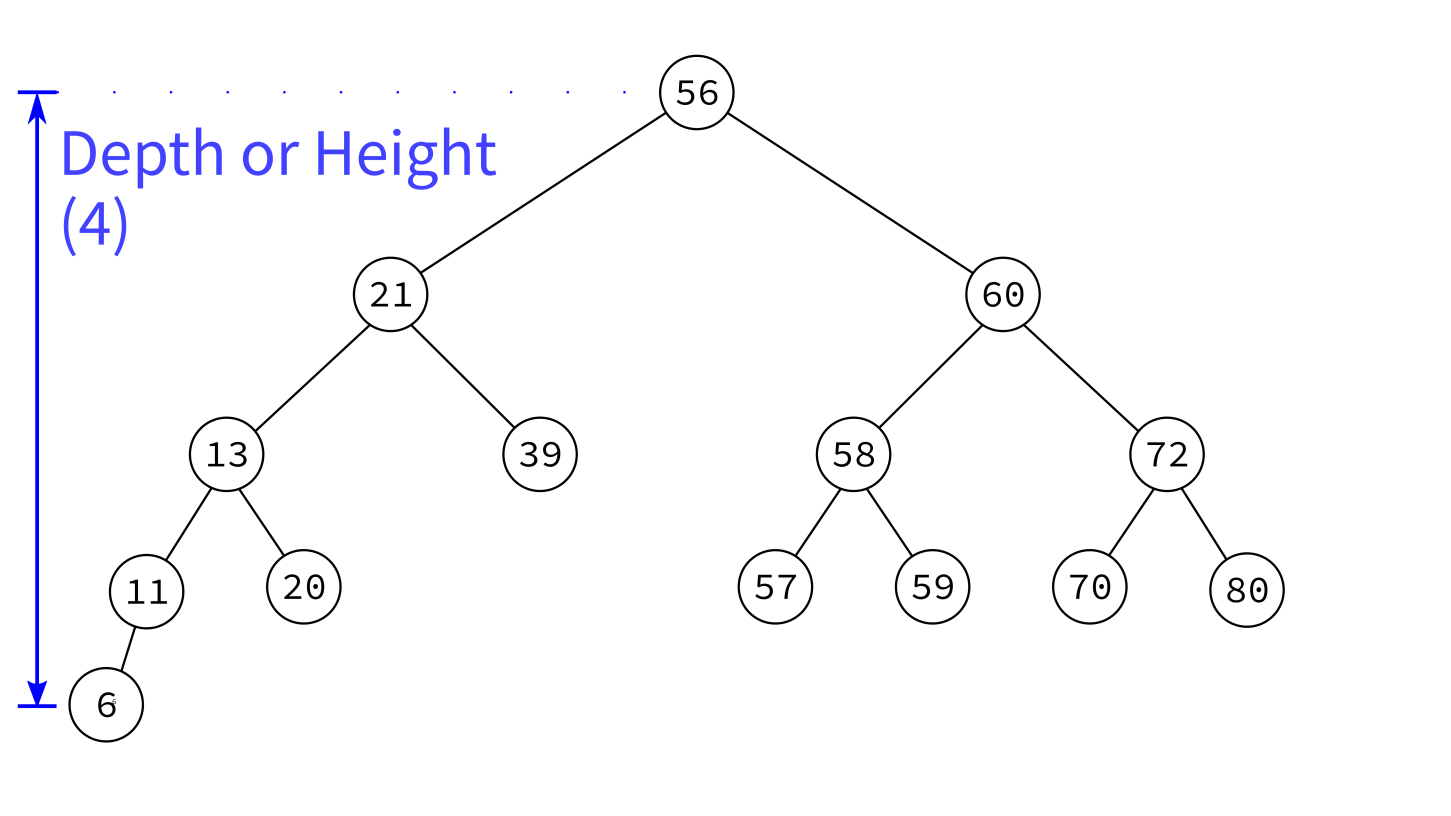
Coding
Let's build a class to represent nodes of a binary tree that also store keys.
Treevis
I provide a module treevis in the sample code repository that can "pretty print" a tree
with the function treeprint(root_node).
Challenge: Read the source of treevis and
figure out how it works!
From tree to BST
Now let's build a subclass of Node to represent a BST.
Desired features:
- Insert nodes (maintaining BST property)
- Search for nodes by key
Search
Given x, find and return a node with key x. Return None if no
such node exists.
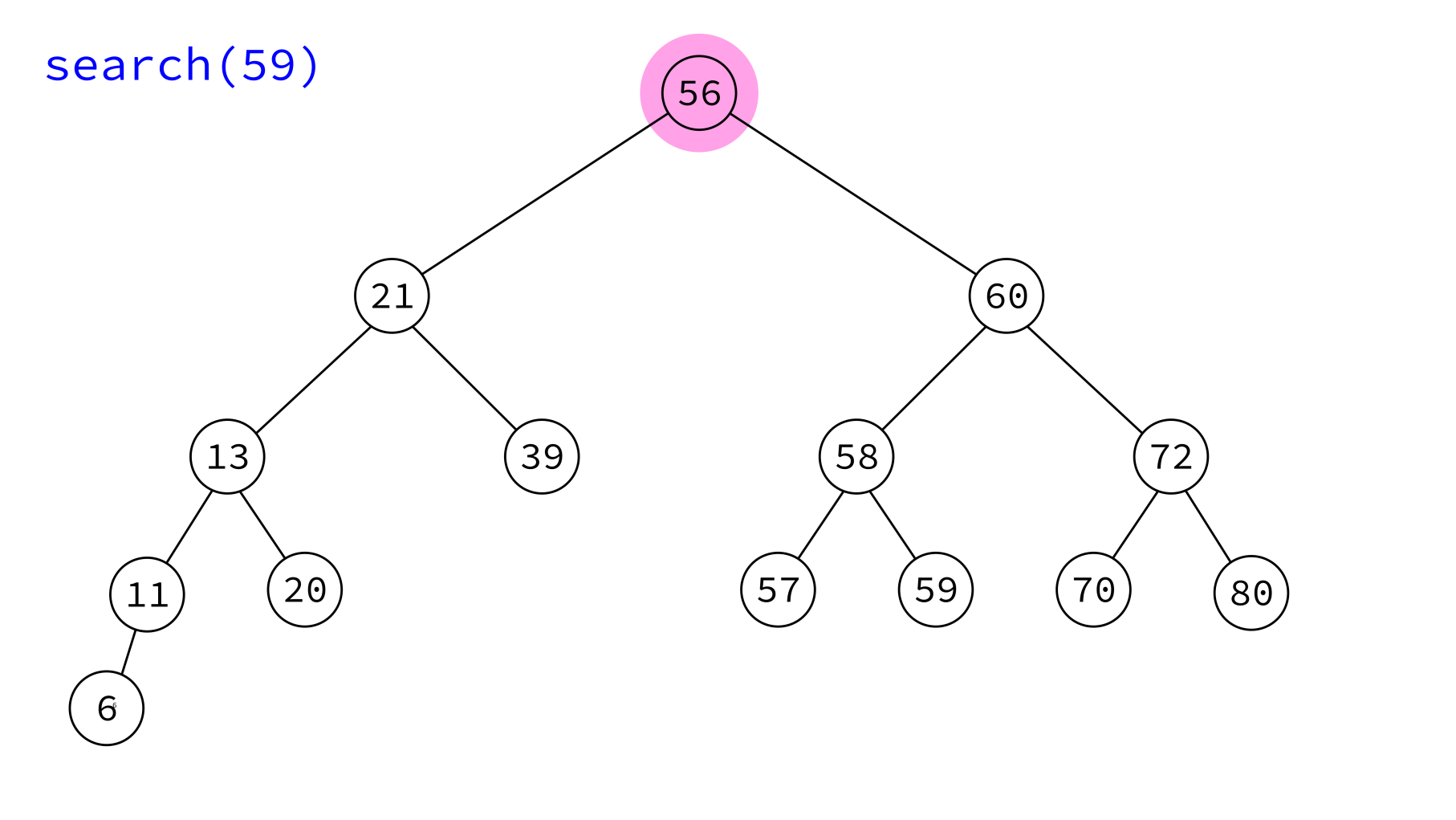
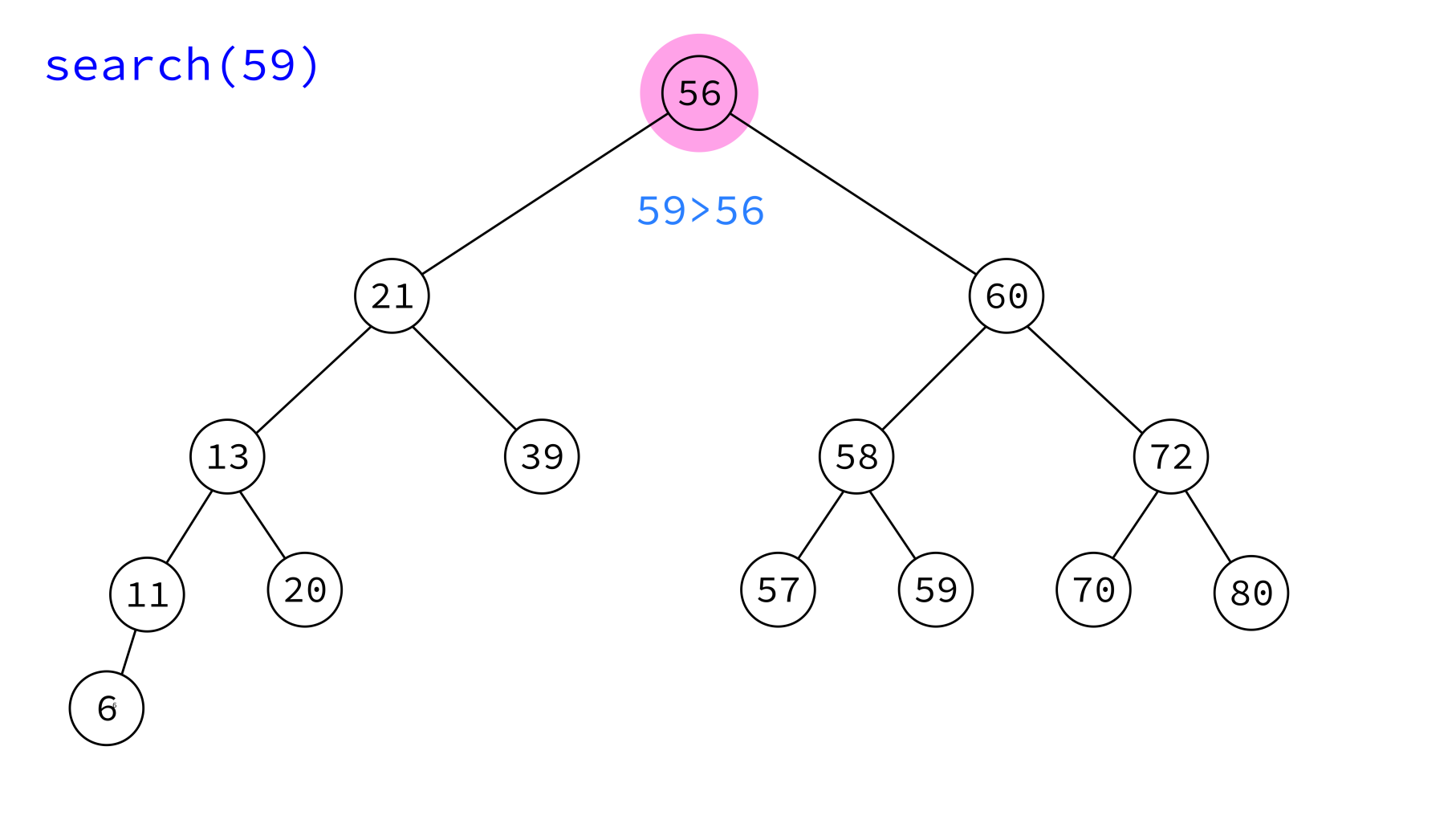
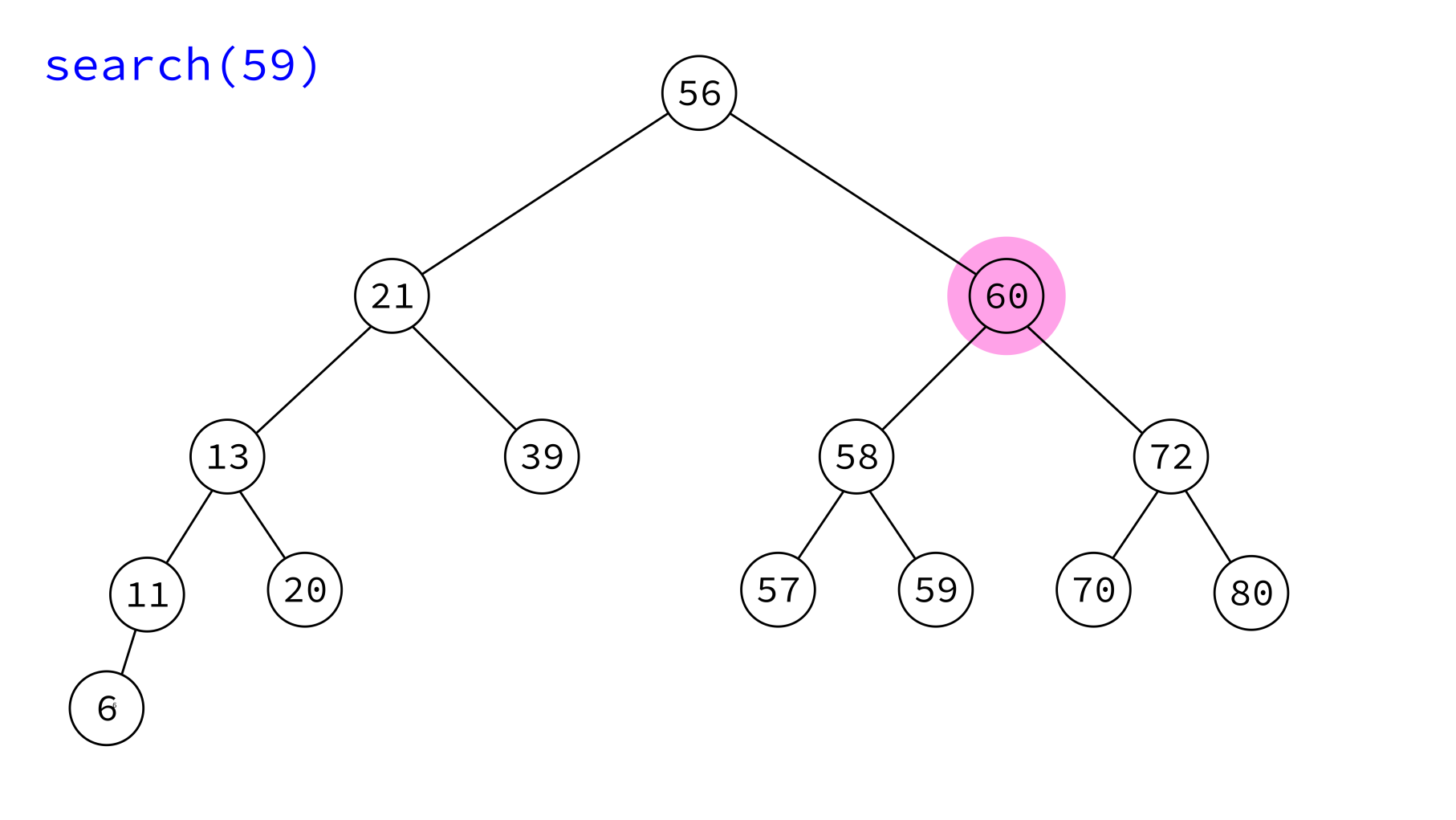
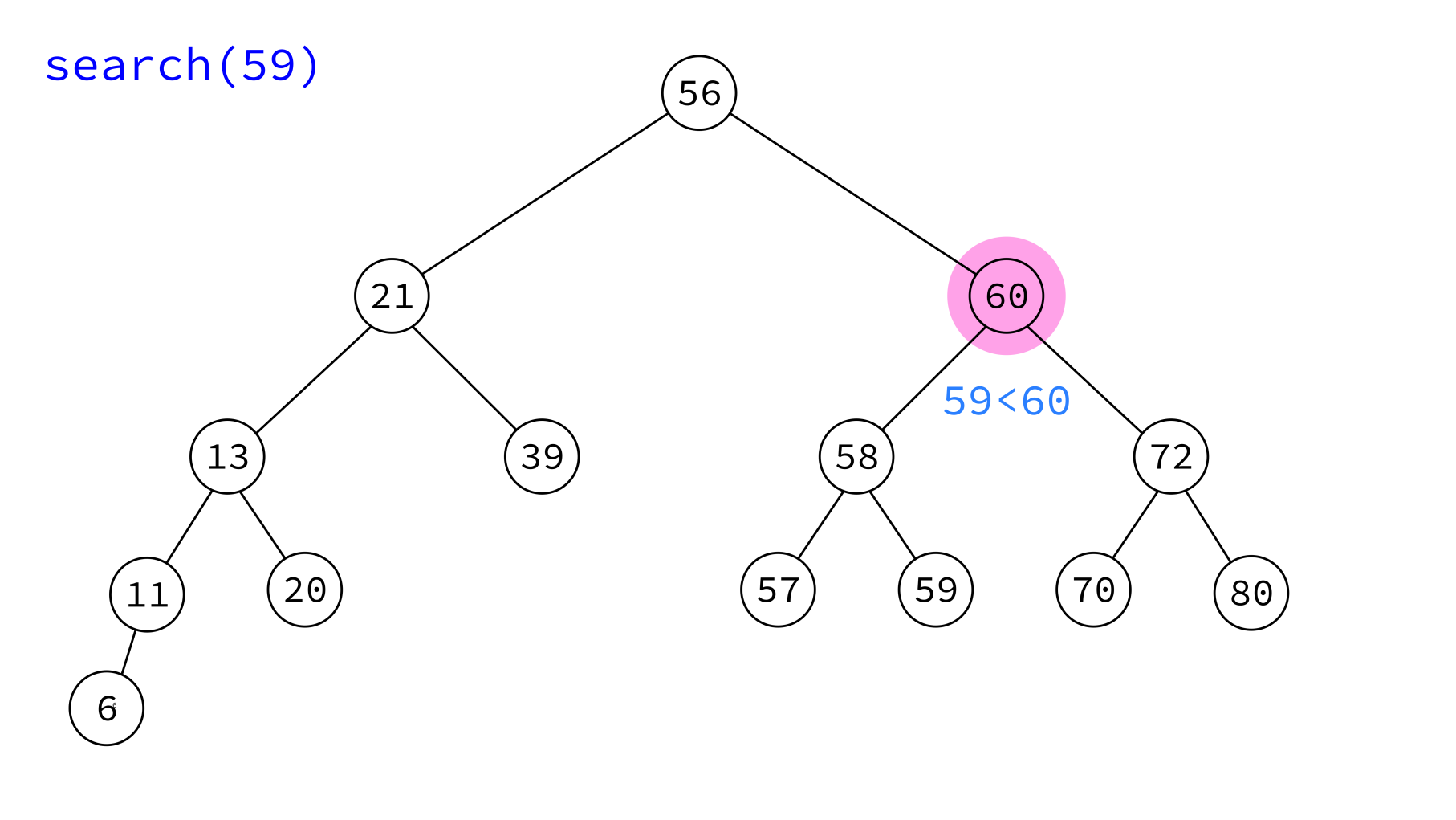
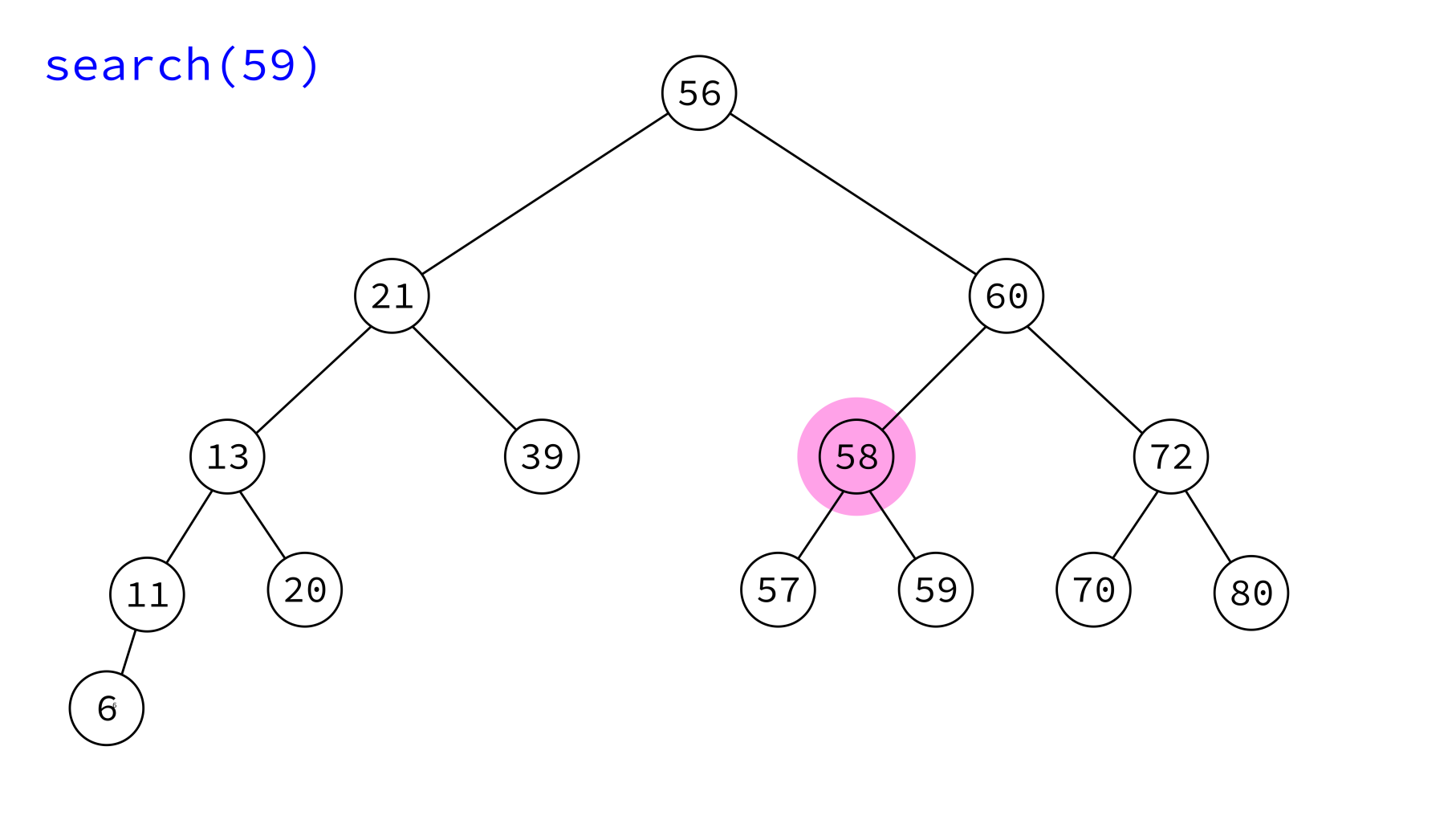
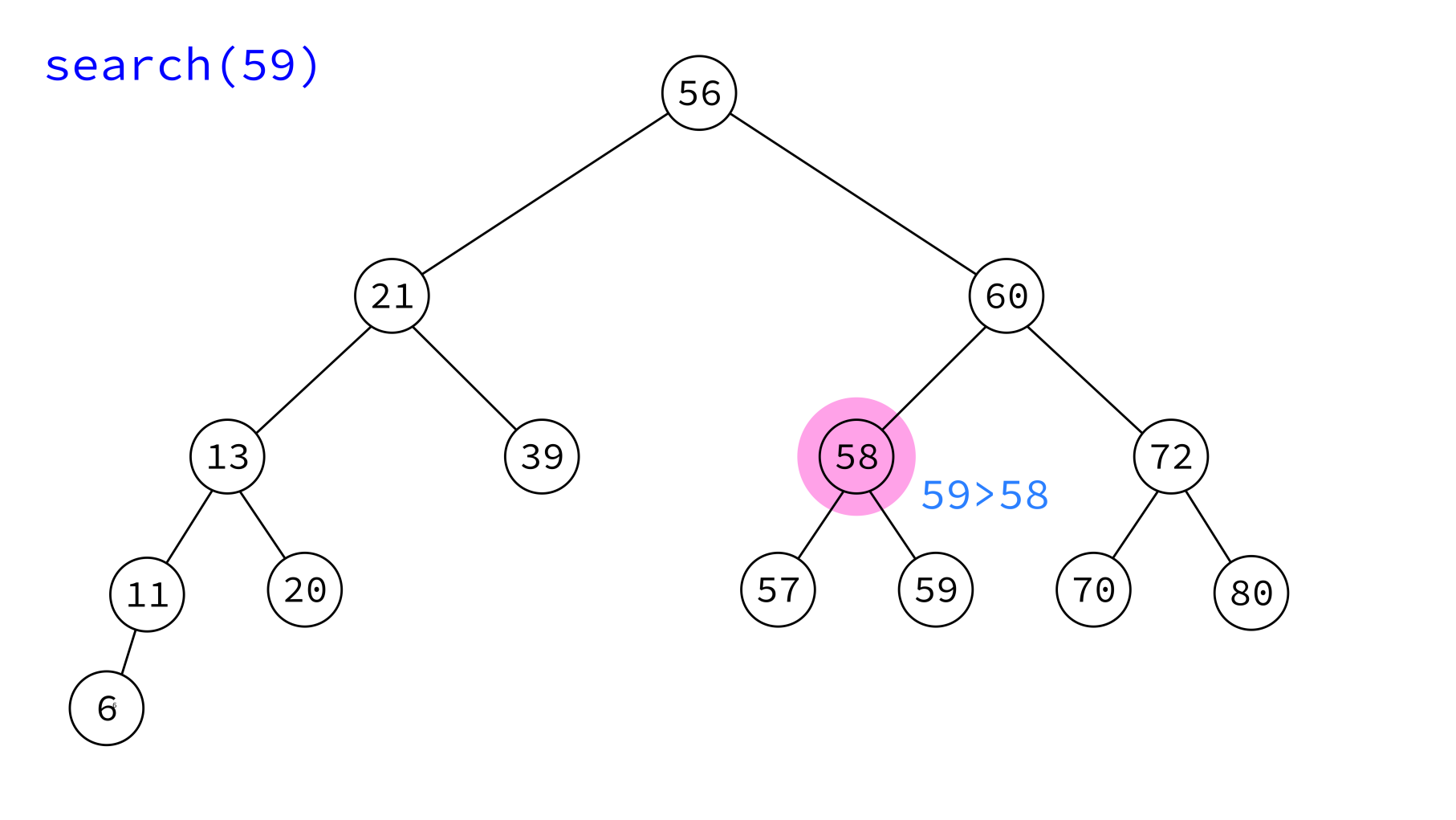
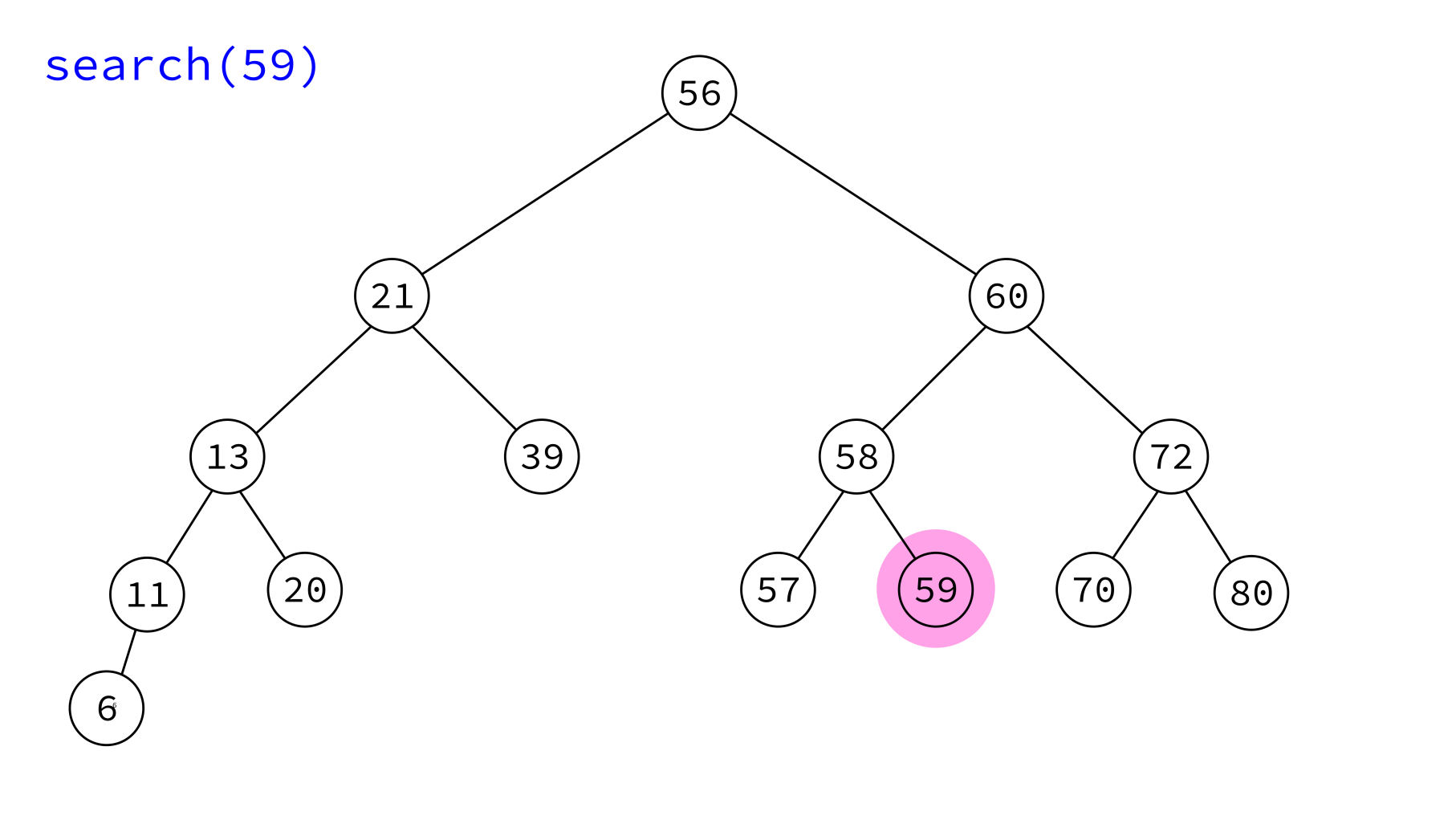
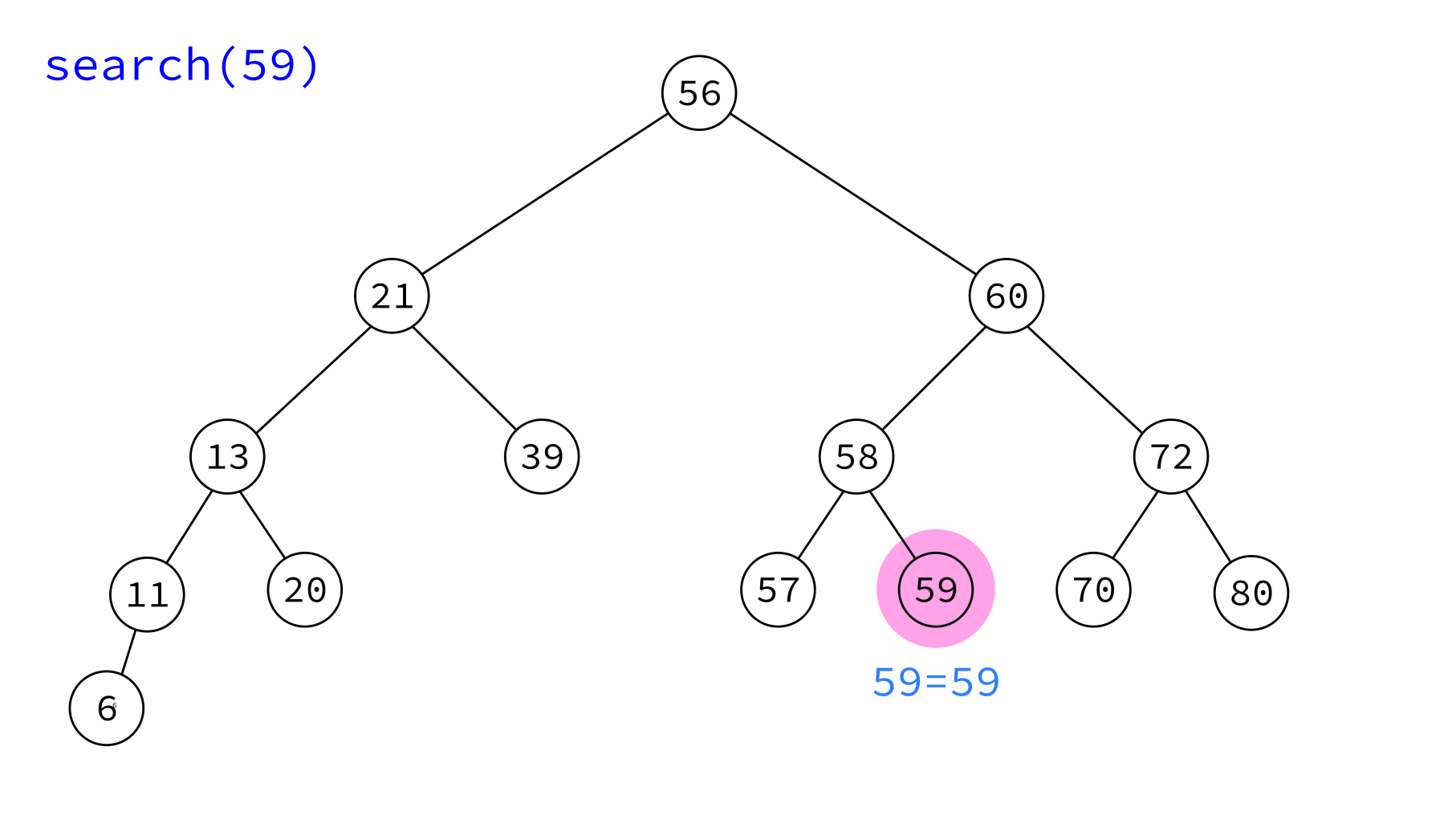
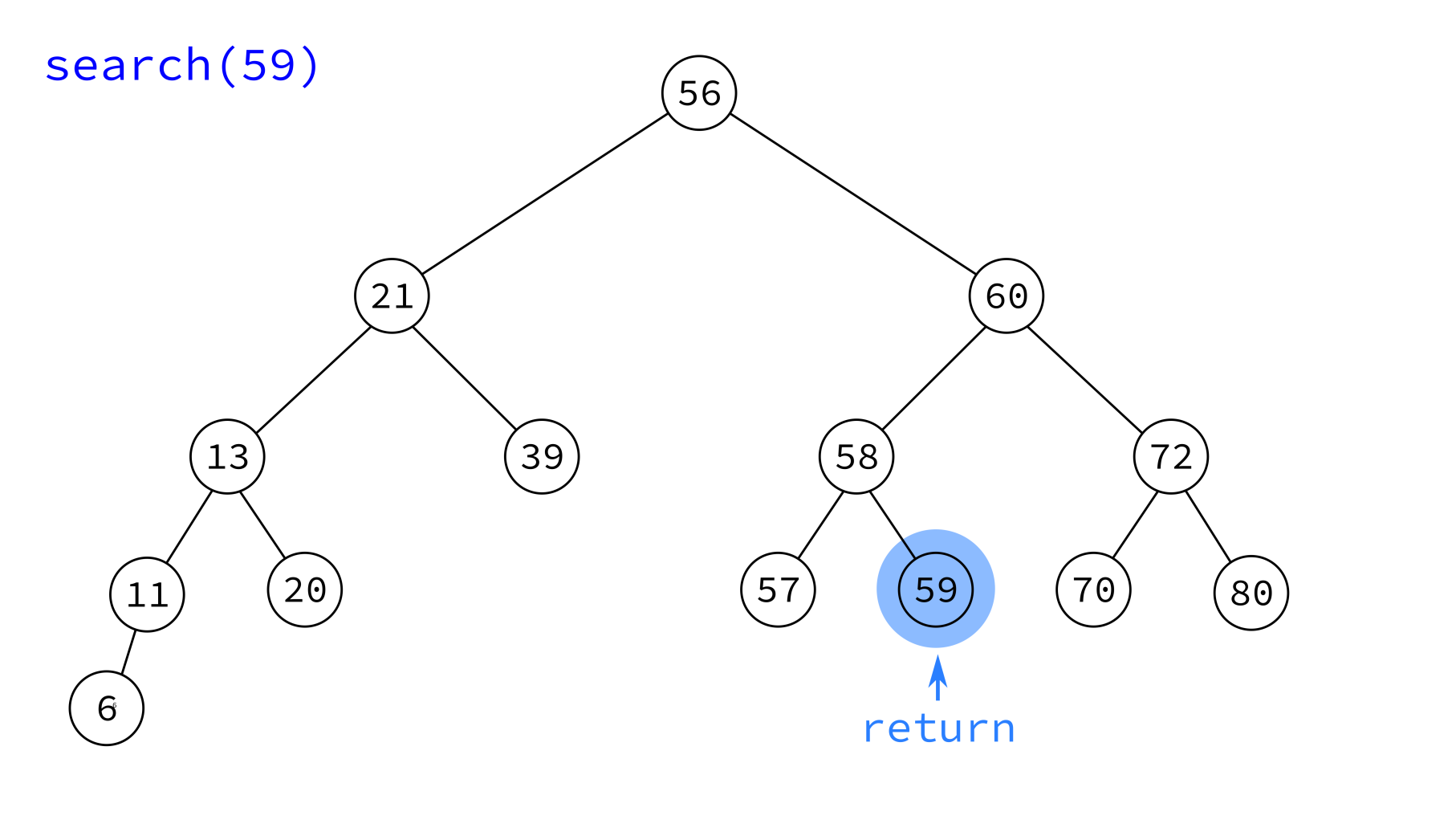
Insert
Given a key, add a node to the tree with that key, maintaining the BST property.
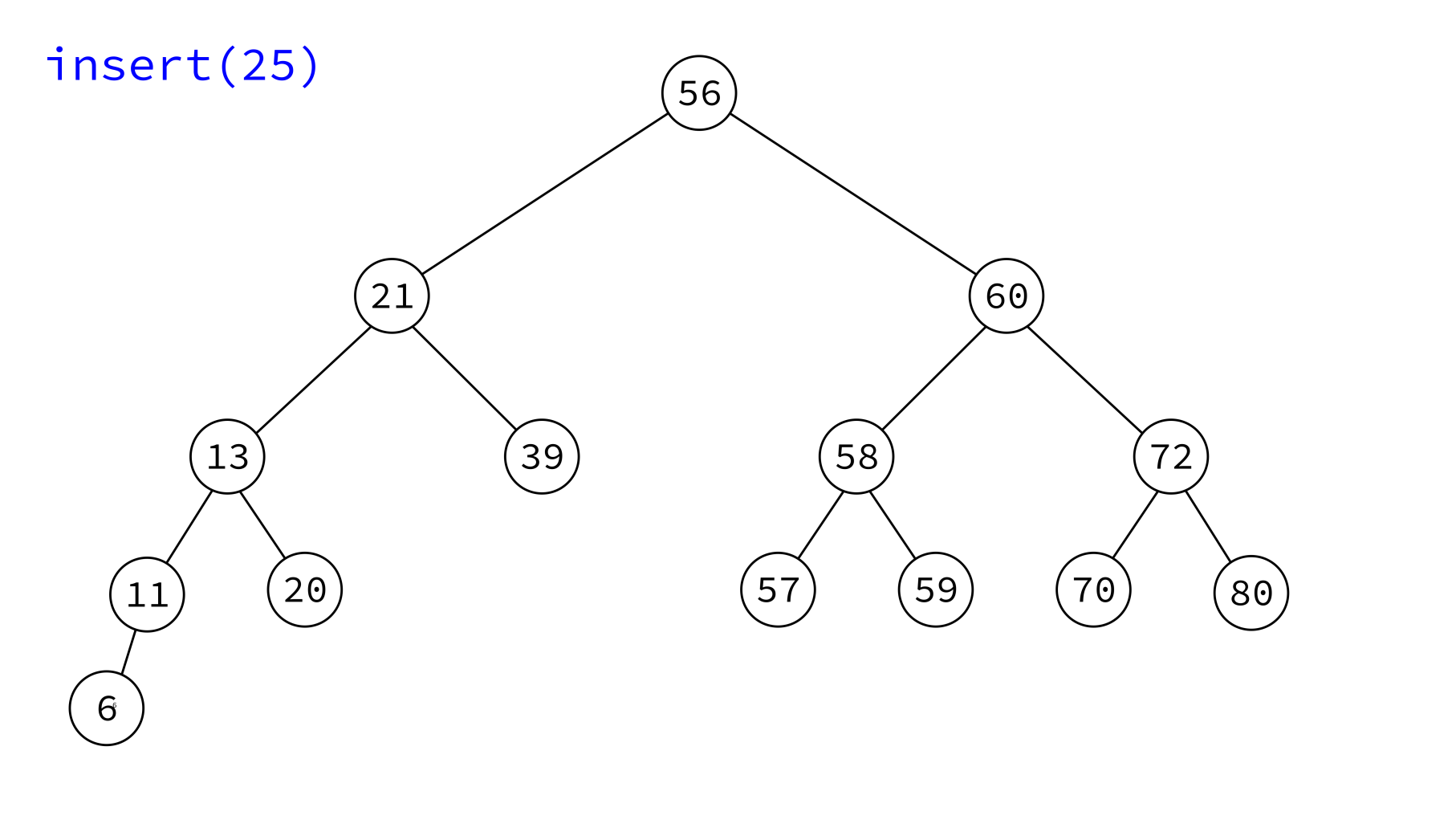
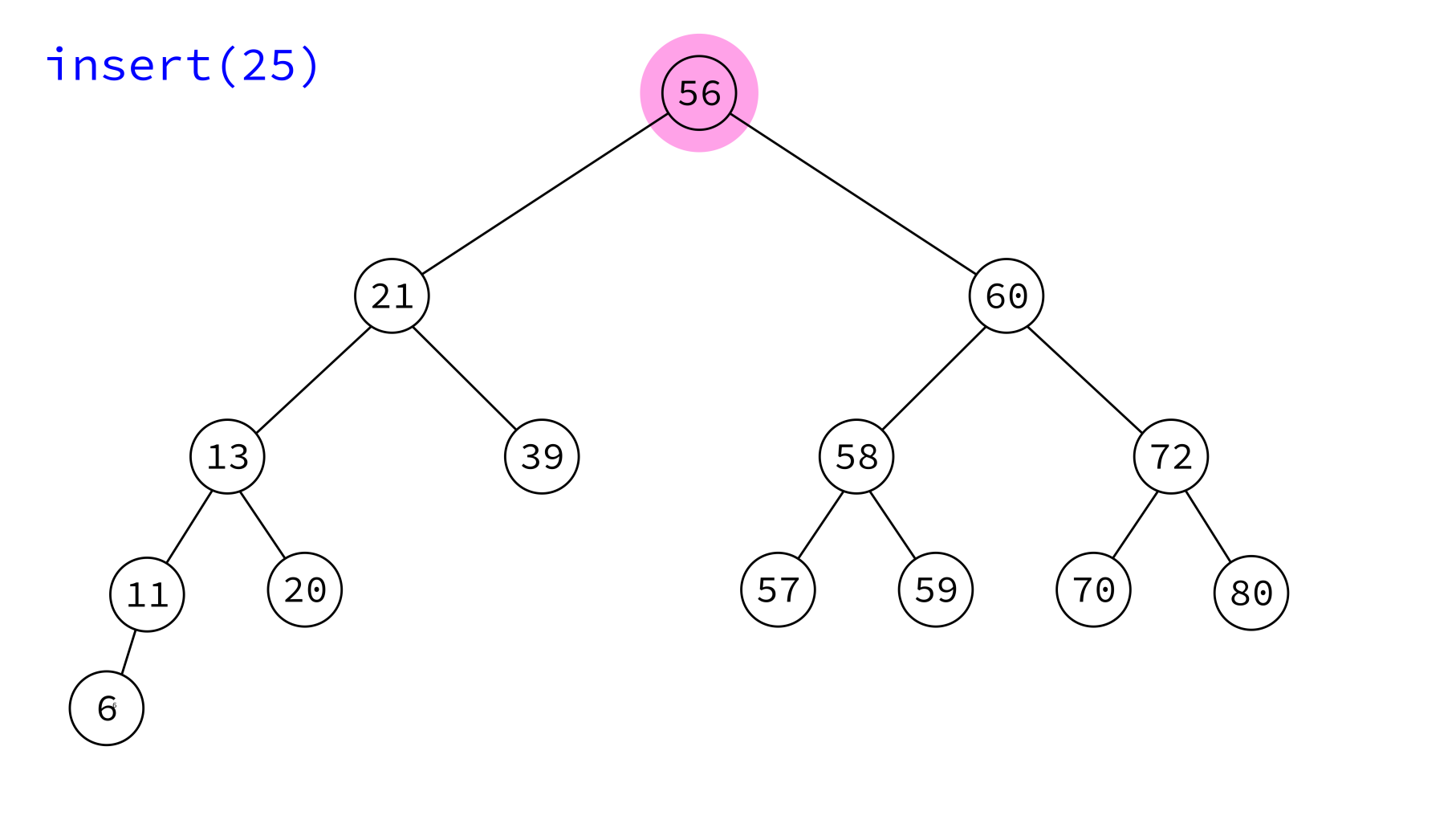
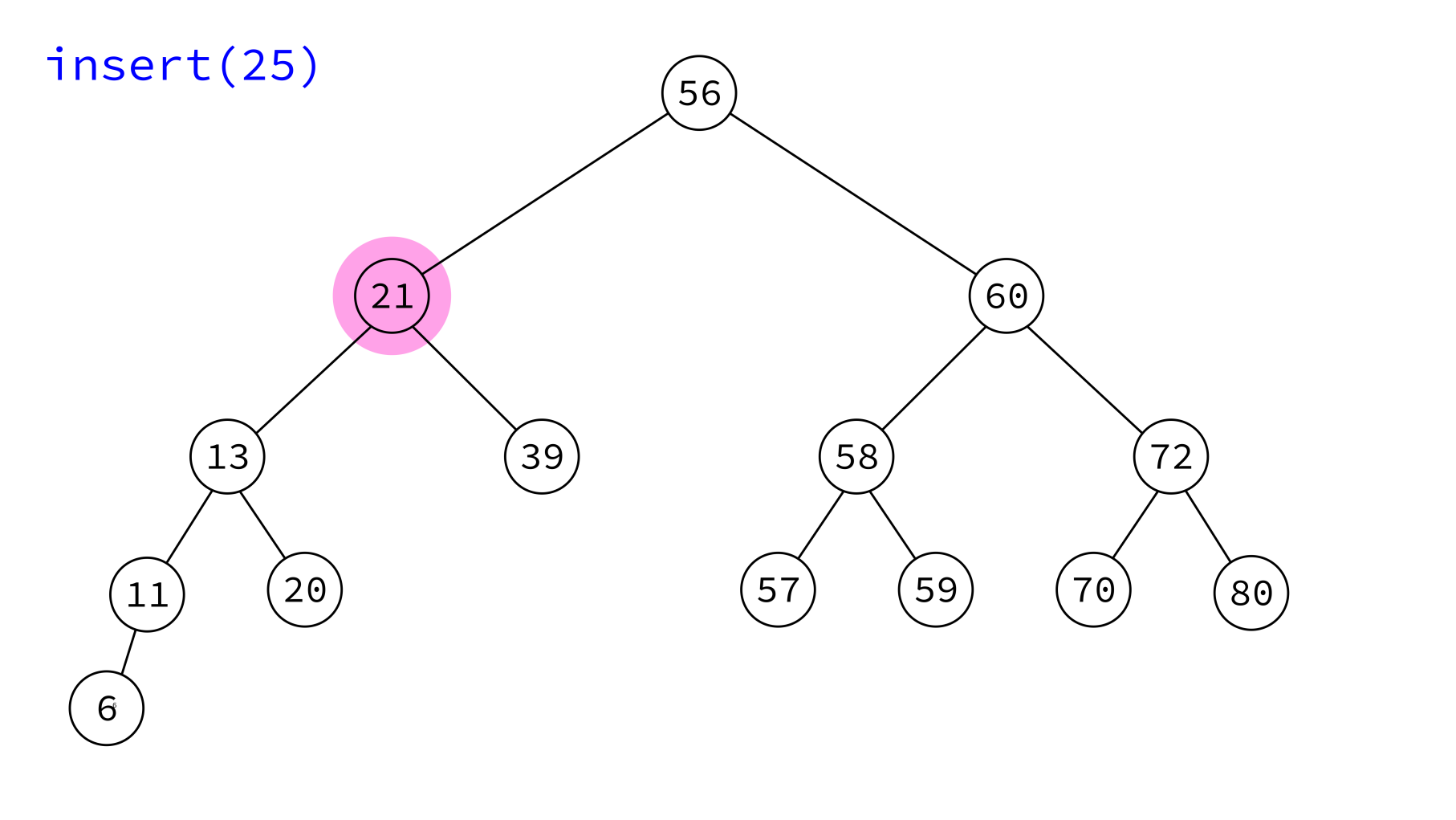
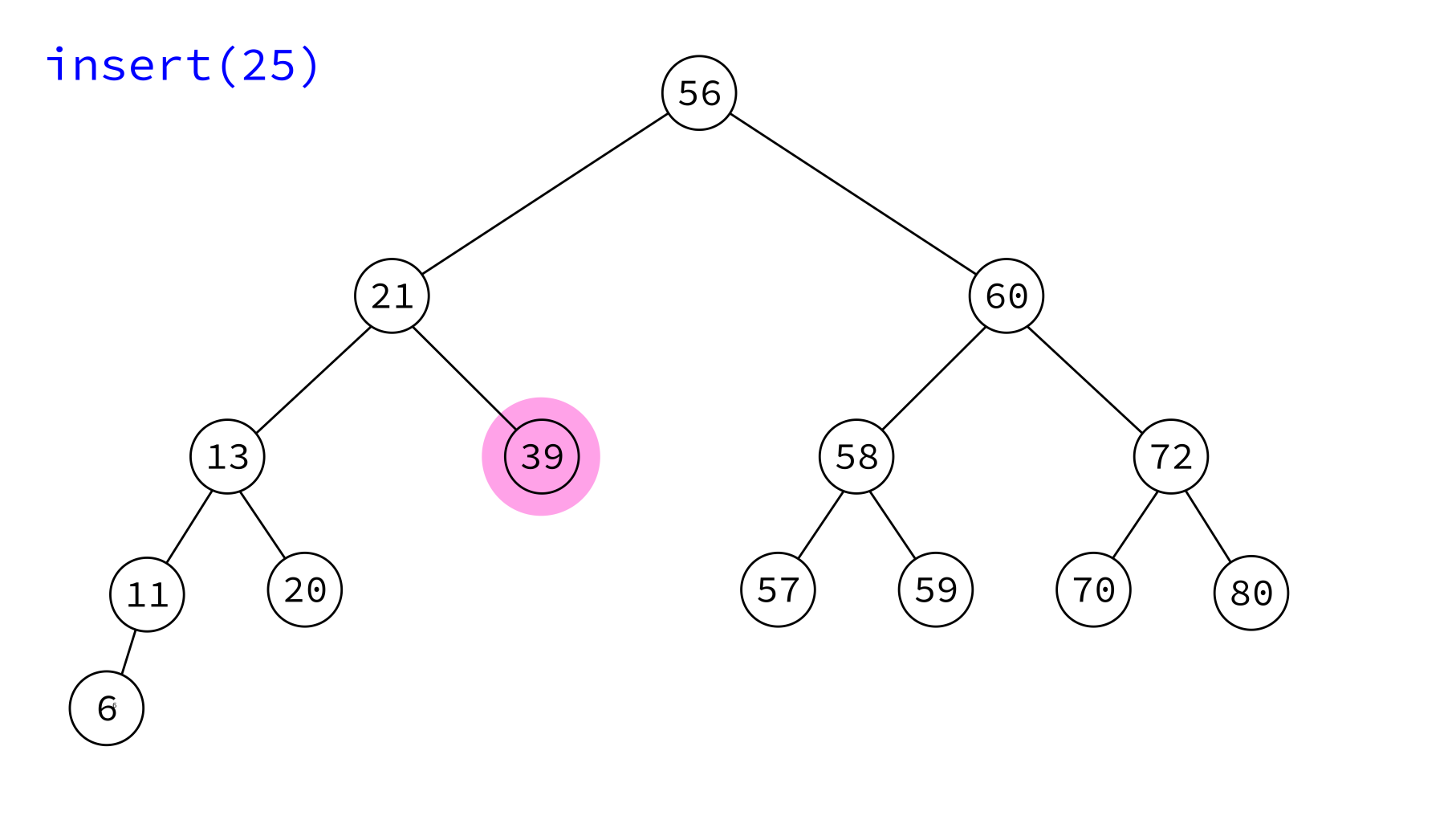
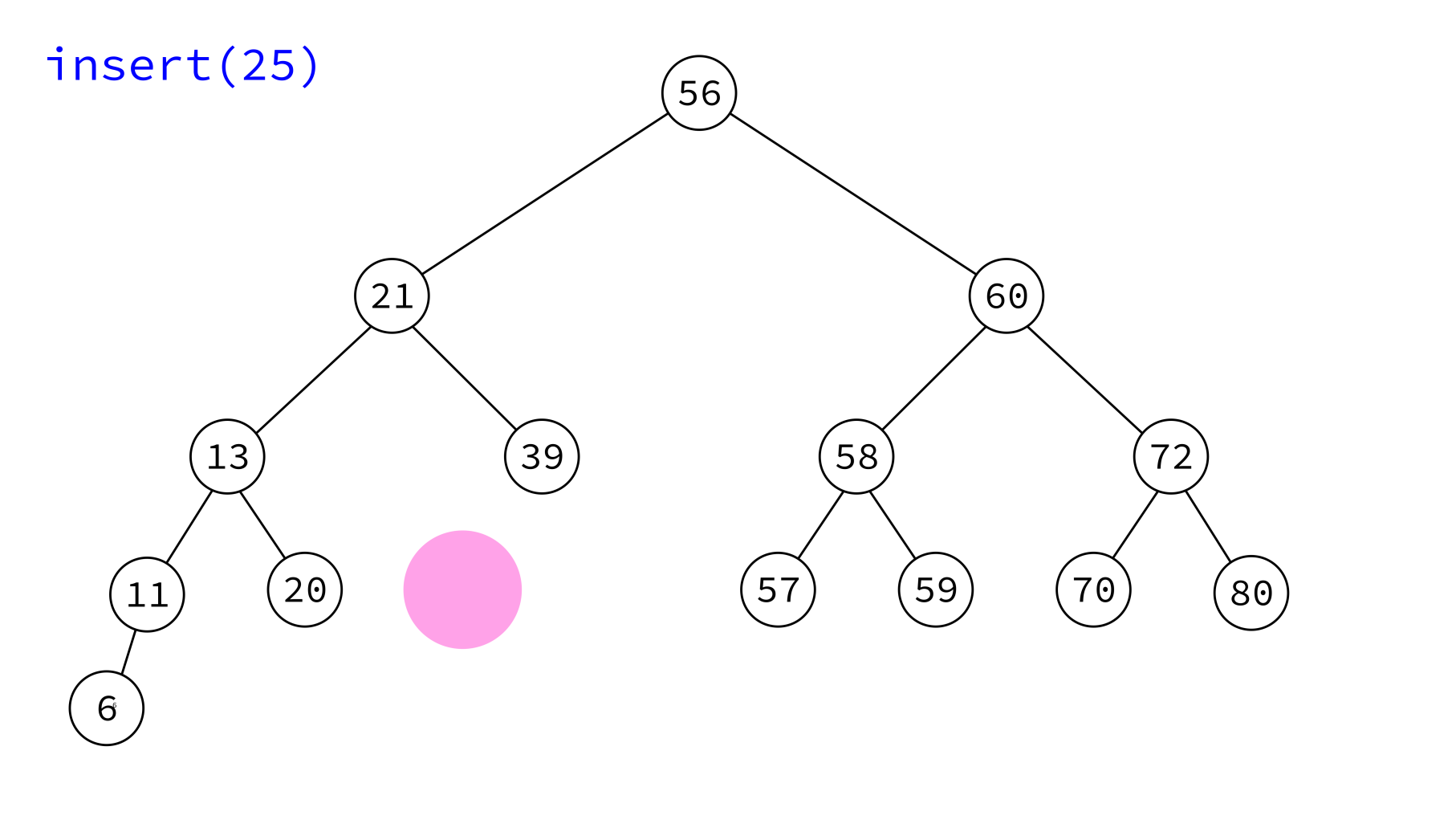
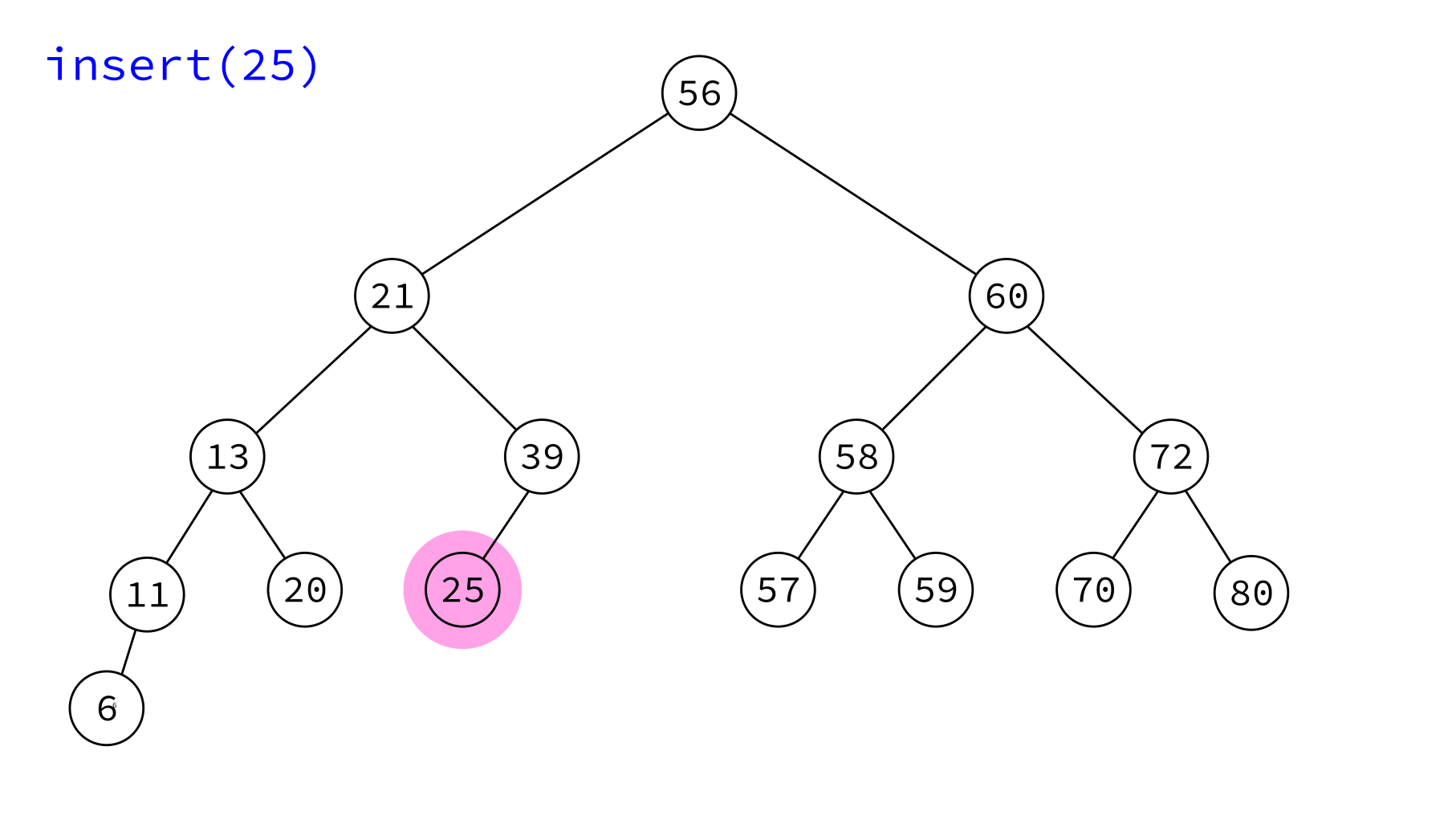
IntegerSet
Let's use this to build a class to store a collection of integers that supports fast insertion and membership testing.
Implementation Hiding
IntegerSet has many possible implementations (e.g. a list, a tree, ...), and a user of
the class doesn't need to know about which one it uses.
References
-
In optional course texts:
- Problem Solving with Algorithms and Data Structures using Python by Miller and Ranum, discusses binary trees in Chapter 7.
-
Elsewhere:
- Cormen, Leiserson, Rivest, and Stein discusses graph theory and trees in Appendices B.4 and B.5, and binary search trees in Chapter 12.
Revision history
- 2022-02-24 Last year's lecture on this topic finalized
- 2023-02-20 Updated for 2023